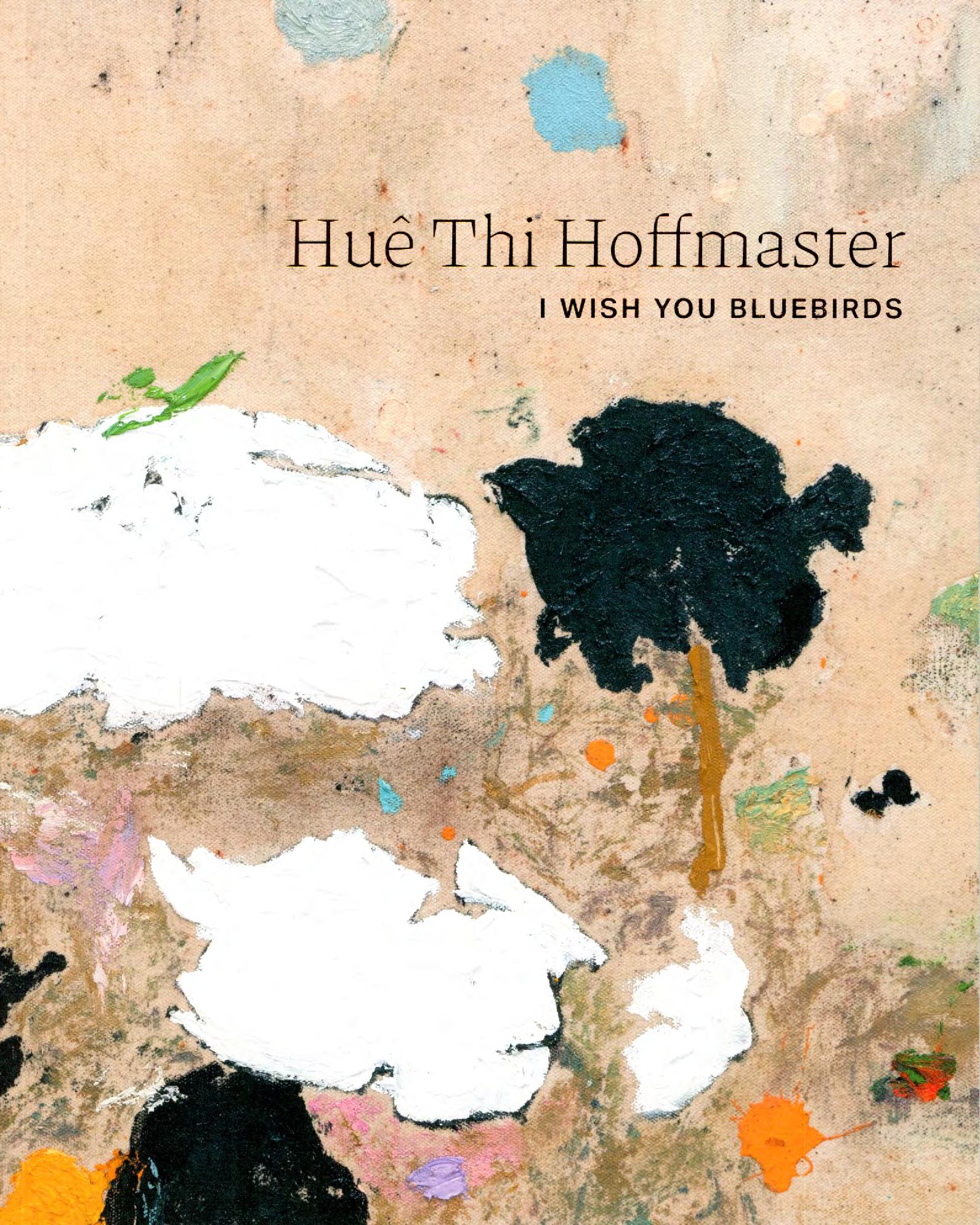
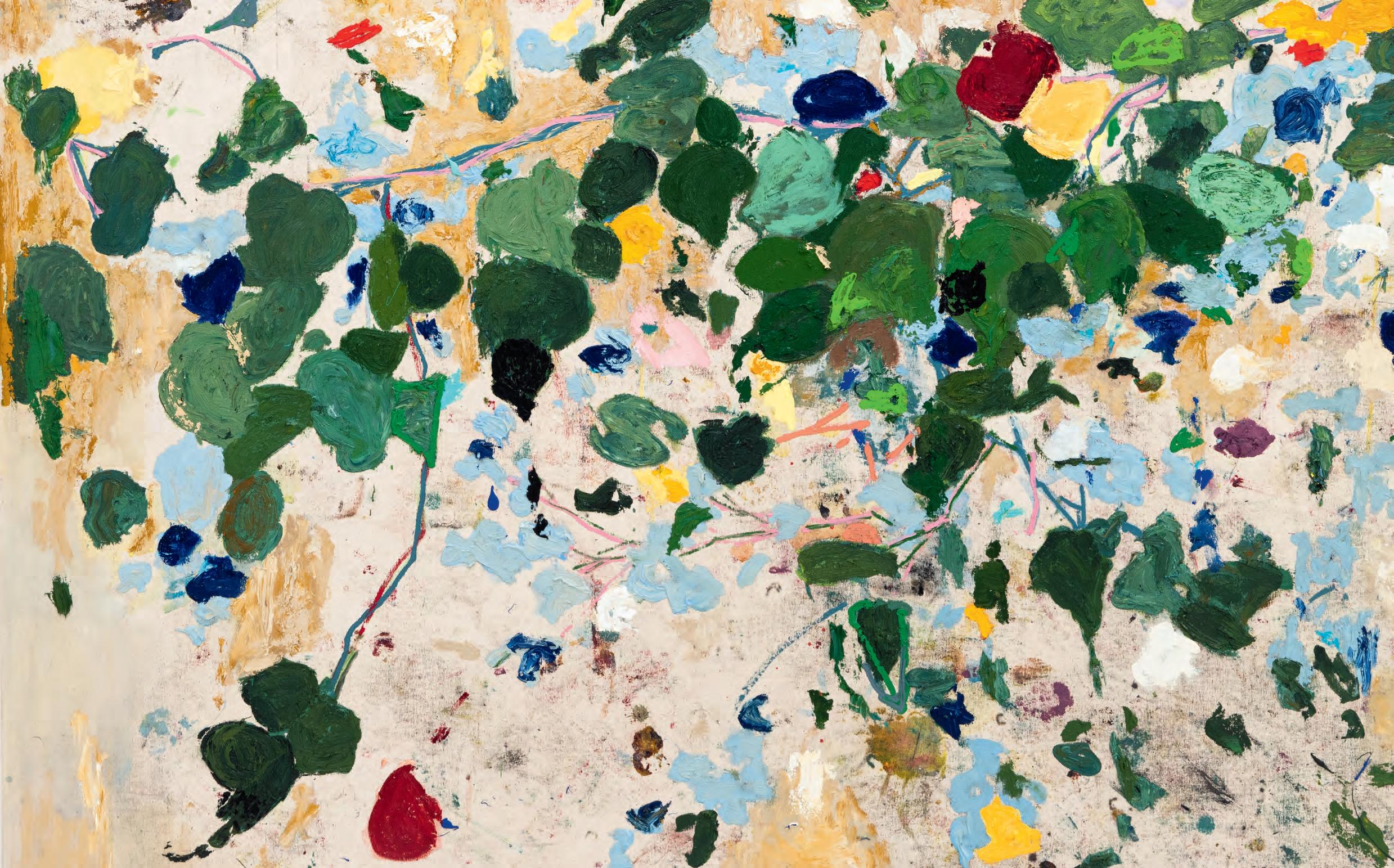
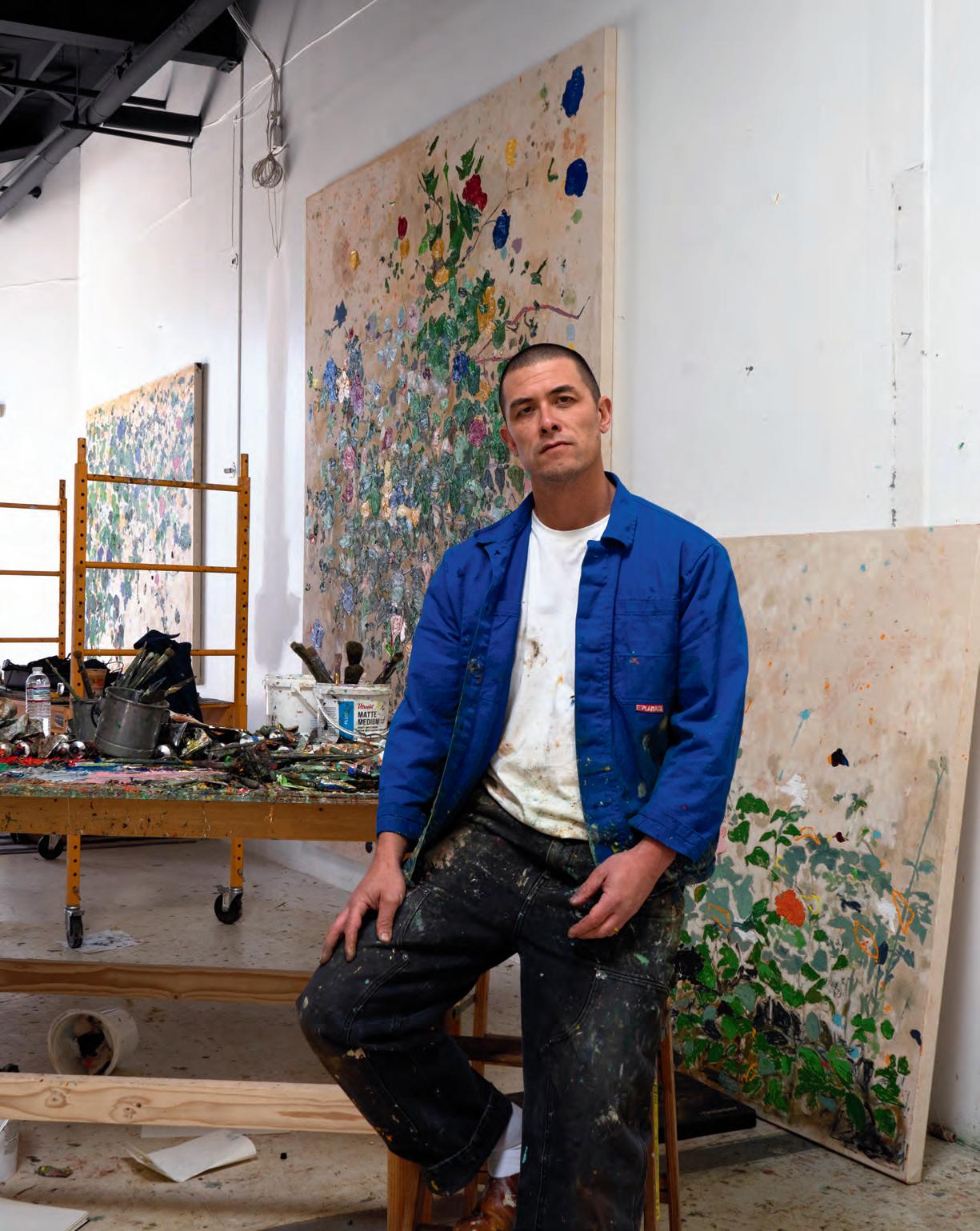




May 7 – June 14, 2025
2025
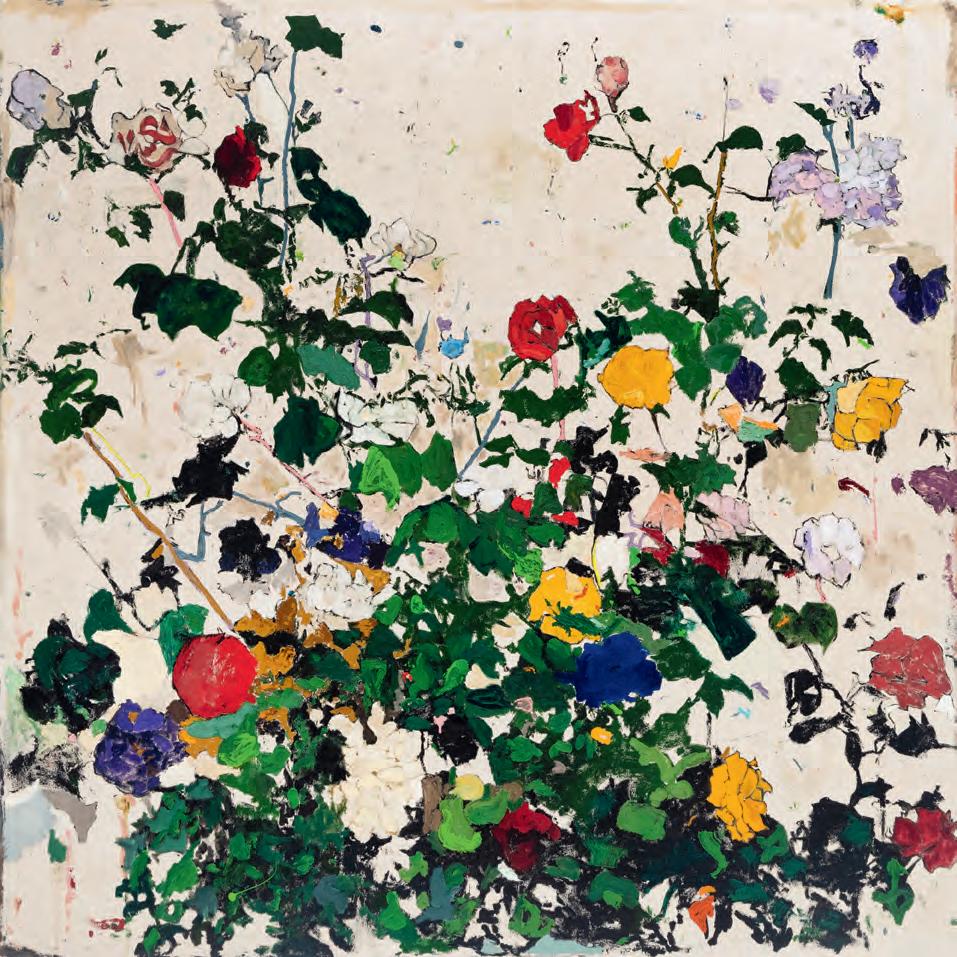
Huê Thi Hoffmaster’s lyrical new paintings (from a series of twenty works called I Wish You Bluebirds) seem to bloom before our eyes, tremulous with color and flickers of light. Entering the gallery is to leave the monochrome of downtown New York behind, transported into an improbably technicolor semblance of a garden swagged by lavish clusters of wildflowers. The florals seem to sway, as if ruffled by an imaginary breeze, the illusion abetted by the rhythmic scatterings of paint, their edges often blurred. In making us think about gardens, Hoffmaster’s paintings remind us that in most, if not all, of the world’s origin stories of a mythic golden age, the Earth was pictured as a vast garden, an Arcadian realm of prodigious abundance and matchless beauty.
I Wish You Bluebirds is also the exhibition’s title, taken from a much-covered American standard (adapted from the French) that has a deeply personal meaning for the artist. He associates it with thoughts of his mother’s family in Vietnam, whom she left behind when she emigrated to the United States decades ago, people completely unknown to him, wafting a sense of loss subliminally over the works. Every major language has a word for that undertow of longing, the awareness that life is fleeting, precarious, and inevitably touched by sorrow (mono no aware in Japanese,
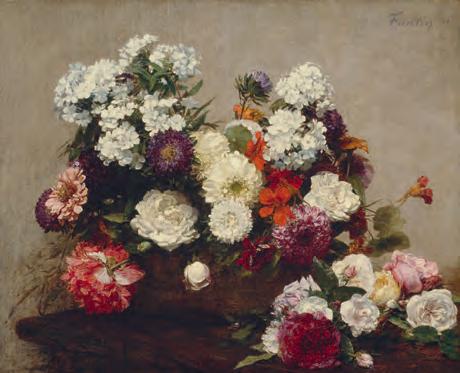
say, or saudade in Portuguese), a word that is so intertwined with the soul of the culture that natives claim it is untranslatable.
Despite that, these paintings are upbeat, infectiously so, conceived in the present tense. They are also unapologetically, exquisitely beautiful, noteworthy in a period when beauty is still too often regarded with suspicion, devalued or dismissed. They eagerly affirm the force of life and the cycles of nature, countering the frequent, far more pessimistic projections about the future of our planet modeled on our current
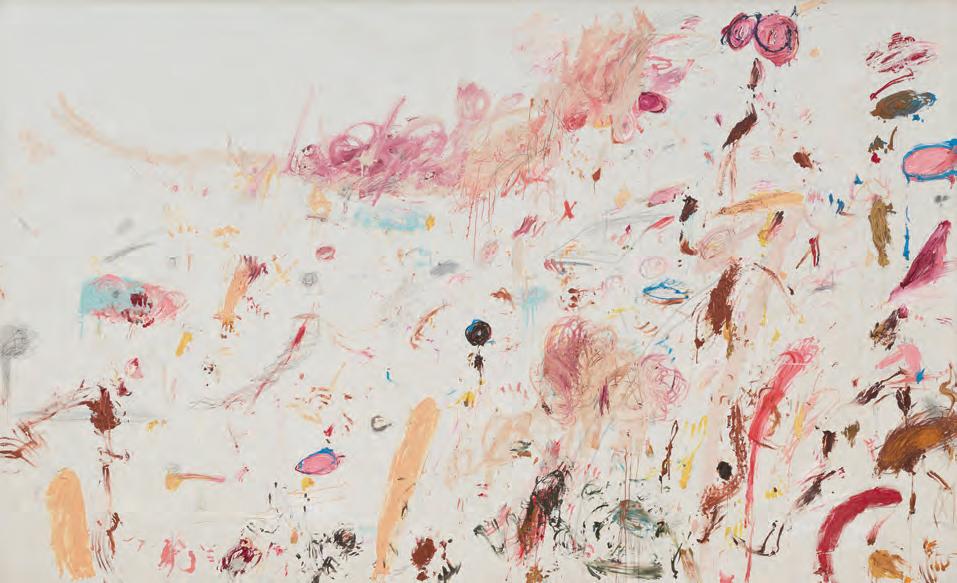
feckless, self-destructive behavior. Who can consider today’s environmental disruptions without anxiety?
Hoffmaster’s works are shaped by both Eastern and Western artistic traditions, with their distinct approaches to depth, space, perspective, medium, techniques, composition, subject, and philosophy. He says that when he was beginning to look at art more attentively, with a more critical eye, the artists who astonished him and showed him what was possible were Europeans and Americans—Henri Fantin-Latour, Claude Monet, Édouard Manet, Anselm Kiefer, Clyfford Still, Philip Guston, Joan Mitchell, and Cy Twombly, among others. Soon, however, he became transfixed by classical Chinese landscapes, particularly those of the great ink artists of the Ming Dynasty as well as other Asian
masters. I see traces of the 17th century Japanese artists Hon’ami Kōetsu, Tawaraya Sōtatsu, and Ogata Kōrin, from the celebrated Rinpa school in his output, as well as many others, including the French symbolist Odilon Redon. Hoffmaster learned early that you don’t have to adhere to an established canon to make good paintings: “your mistakes are your voice.”
Half Vietnamese and half American (he took his mother’s name as his first name a few years ago to underscore his mixed heritage), Hoffmaster (b. 1982), who studied at the Pennsylvania Academy of the Fine Arts in Philadelphia, blends the characteristic materials and techniques of Asian art with Western practices into an idiosyncratic compound. This hybridization enriches and extends his aesthetic vocabulary while
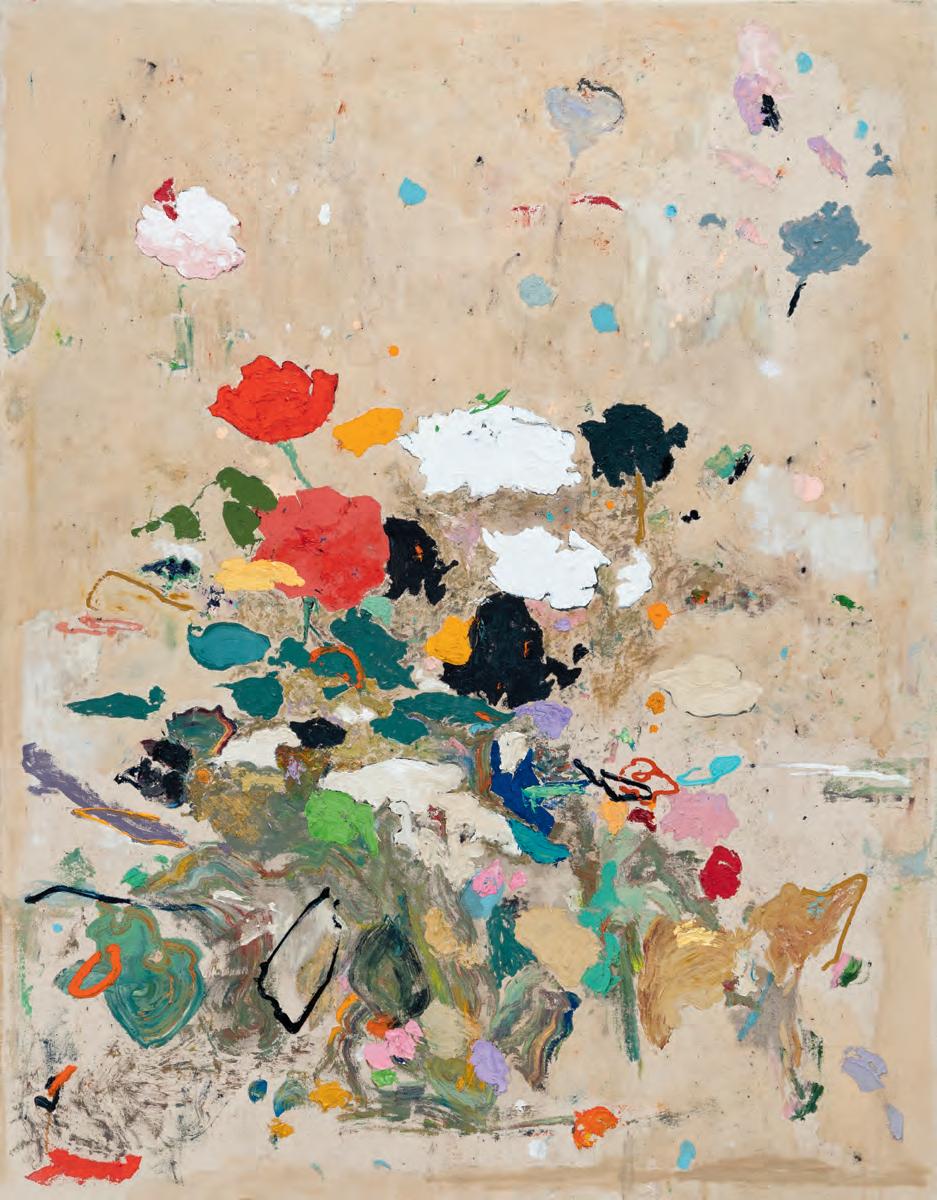
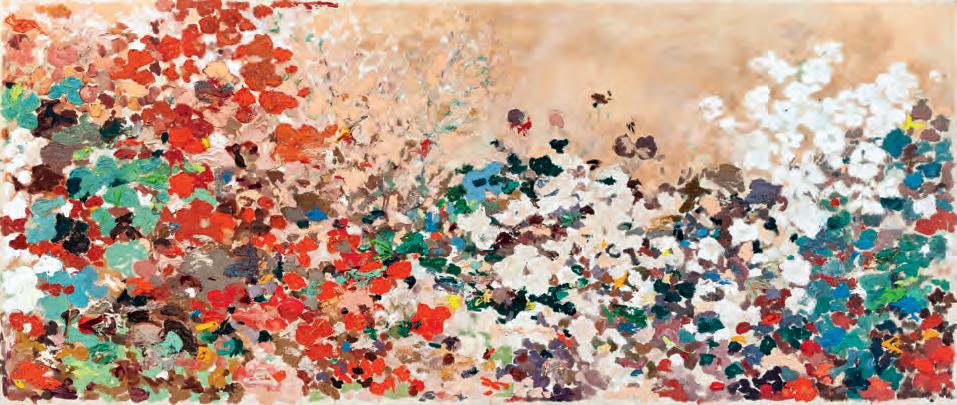
more closely reflecting his ideas, sensibilities and biracial identity. He uses ink as well as oil paint, woodblocks (first used in China) and whatever improvised methods occur to him. If he likes the results, he adds it to his technical arsenal. He might pick up a chunk of dried paint and use that instead of a brush, though he also uses brushes, dozens of them, some worn down to a nub (which he will find uses for), not to mention straightedges, palette knives, and whatever else at hand that might produce an unexpected effect, surprising him.
His formats are similarly hybrid, a tribute to Asian hanging scrolls and folding screens as well as conventional Western rectangular or square canvases. He prefers canvas to fabric or paper, his scale unrestricted, often ambiguous. Are we looking at a detail or a panorama? The works range from modest to immersive in size. While I expected him to be interested in murals, he is not, he says, because he prefers his paintings to be discrete—separate from the architecture.
A natural painter with an innate talent for precise, realistic rendering and a superb color sense, Hoffmaster loves everything about the medium: how sensuous the paint on the palette looks; how it changes depending on the manner of application; how it dries in stages and how that alters color, tonality, density, and texture.
This series represents a new way of working for him, though, in fact, he is always looking for new ways to challenge himself and discover something he hasn’t noticed before. He never imagined that he would one day be making flower paintings. Early in his career, he was intrigued by nonobjective art but after a time, he felt that his abstractions were becoming too systematic, too predictable. He introduced flowers into his work, but at first, they were just glimpses from his peripheral vision and not identifiable as anything as questionable as flowers. That was then. Now, they are undeniably flowers and his primary motif. He likes having a subject—it clicks the start button of his imagination and gives it a push.
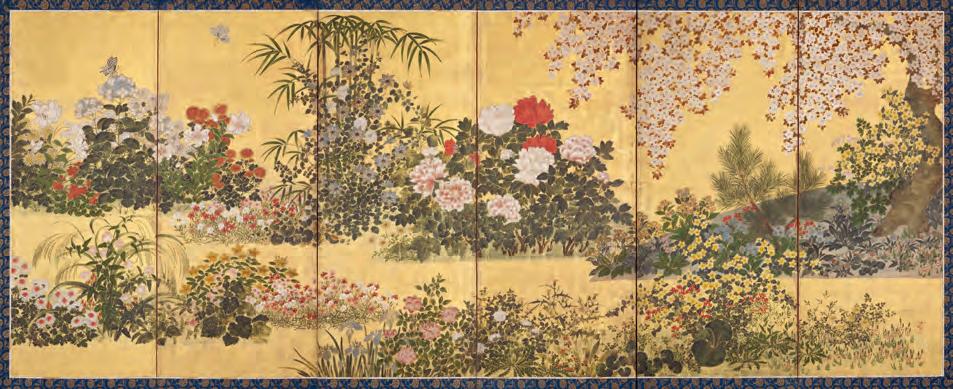
These works are not predetermined or dependent on preliminary drawings. Hoffmaster wants to explore, to play, without knowing the outcome. He begins with an ink wash that loosely suggests what the composition might be, then digs in to pull out the imagery with oil paint. The resolution arrives intuitively, “out of thin air.” While that might sound like a painting that makes itself—he is guided by the paint, by what comes before determining what comes after—the choices that still need to be made are his.
He can complete a painting in one take, in a matter of a few hours, or it can take far longer, depending on a host of factors. Like many artists, he spends much of his studio time simply looking at the work, thinking. This is also the first time that he knew from the outset that it would be a series with a fixed number of paintings. While he often groups his work, he doesn’t usually decide in advance which paintings will constitute a series until they are completed. This decision, then, marks a major departure from his typically more freewheeling process.
The flowers seem capriciously flung across the surface, ready to escape its limits, a beguiling mini-whirlwind about to spin outward into real space, its motion centripetal or centrifugal. The compositions might hover over the center, hug the bottom or wing upward. They might be vertically or horizontally oriented, stretching, in one instance, to more than 11 feet across. Poppy reds, canary yellows, a medley of verdant greens, and sky blues dazzle the viewer, giving the descriptive “full spectrum” a new vibrancy. Flesh tones fill the negative spaces of the ground, turning them positive, lifted from a pretty François Boucher, perhaps. There are, joltingly, anomalously, among all these ebullient shades, scraps of discordant grey and swatches of black, serving as counterweights or prescient shadows. They make you pause. These gardens of delights, like everything terrestrial, are home to both darkness and light.
Coming closer to the paintings, what at first seems to be flowers, leaves, grasses, and birds reveal themselves as appliqués of paint–impastoed boutonnieres
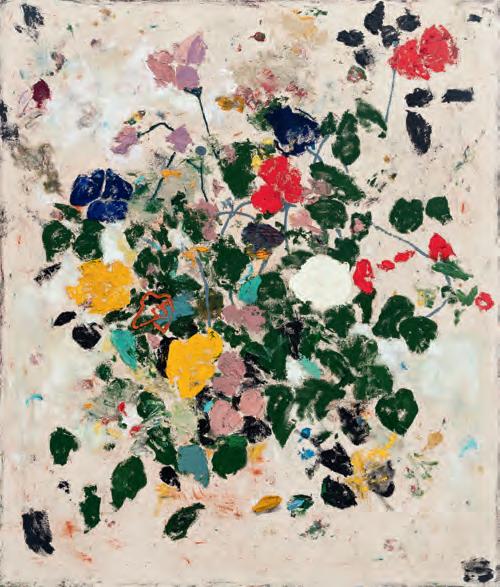
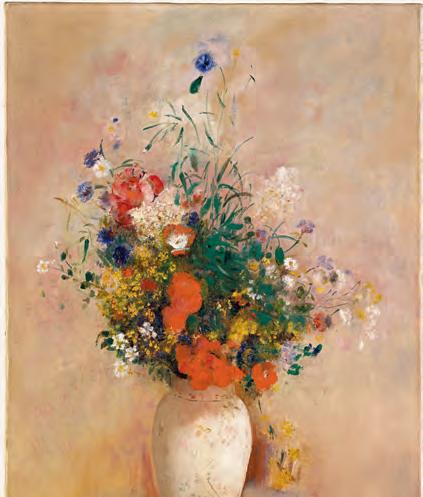

trailed by calligraphic, delicately squiggled lines that imply branches and wisps of stems. They are flecked with drops of pigment that make you think of pollen, seeds, even buzzing insects or butterflies but nothing is spelled out. Instead, the imagery vanishes into an abstraction of intricately composed patterns of paint that are a venerable formalist feint (think Velázquez and his salad of tossed strokes that magically coalesces into imagery at a certain distance), without a drawn petal in sight—or a bluebird.
Negative space plays a significant role here.
Hoffmaster’s floral arrangements emerge from a void, an indeterminate, ineffable space that he credits to the influence of Chinese and Japanese paintings. But his void is not empty, experienced as something more tangible, dynamic, generative, though yet unformed
(cosmological space, astrophysicists tell us, is also not empty). His void breathes, balanced between being, non-being, and the potential for being. It nods to calligraphy and its concept of breath and flow, traditionally the art held in highest esteem in Asia. Hoffmaster’s process is similarly connected to breath, to qi, the animating force present in everything that exists, according to Taoist beliefs. A true believer, he reads the Tao Te Ching (Taoism’s foundational text) almost daily, its teachings about harmony, simplicity, and letting go integral to his life and art.
These scenes, cultivating the many pleasures of painting, could be read simply as flower paintings— and they are that. But they are also more than that. Such still lifes in Western art harbor within them the iconography of human mortality, of the memento
Gao Fenghan 高鳳翰, Chinese, Qing dynasty, Flowers and Calligraphy (Hua niao za hua ce 花鳥雜畫冊 ), 1737, album leaf; ink and color on paper, 23 13/16 × 18 7/8 in. Princeton University Art Museum, NJ. Gift of Jeannette Shambaugh Elliott.
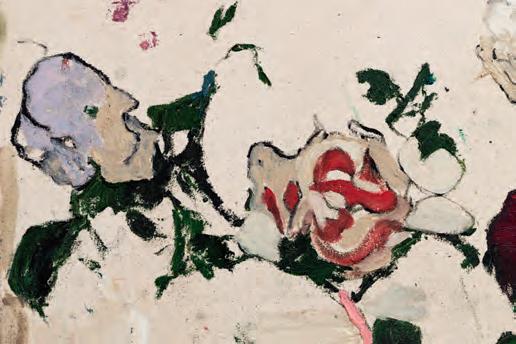
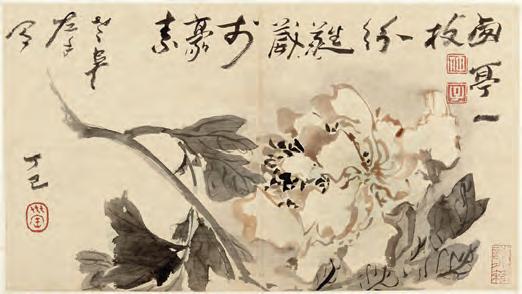
mori. But since they also refer to Asian spiritual traditions, they become a more encompassing meditation centered on nature and the nature of things, in which our species is not given top billing.
Flowers, Hoffmaster says, accompany all the rituals of our lives. He finds in them an eloquent and ecumenical language for exploring nature, art, and his personal narratives and epiphanies. These paintings pose questions about where and what our place is in the world and beyond, as well as who and what we are. One answer that we often seem to forget in our hubris is that we, too, are part of nature and nourished by it. Hoffmaster does not, the realization visceral— and lifechanging.
If you are suggestible to titles—as I am, especially as a writer—you might hear in your mind the tenderly
poignant tune and lyrics that Hoffmaster assigned to these paintings—which I do. You might even find yourself humming it. But I also hear the voice of another bird, with another message from The Four Quartets by the great modernist poet T. S. Eliot:
Go, said the bird, for the leaves were full of children, Hidden excitedly, containing laughter.
Go, go, go, said the bird: human kind Cannot bear very much reality.
LILLY WEI is a New York-based art critic, independent curator, and journalist. Her area of particular interest is global contemporary art and emerging artists.
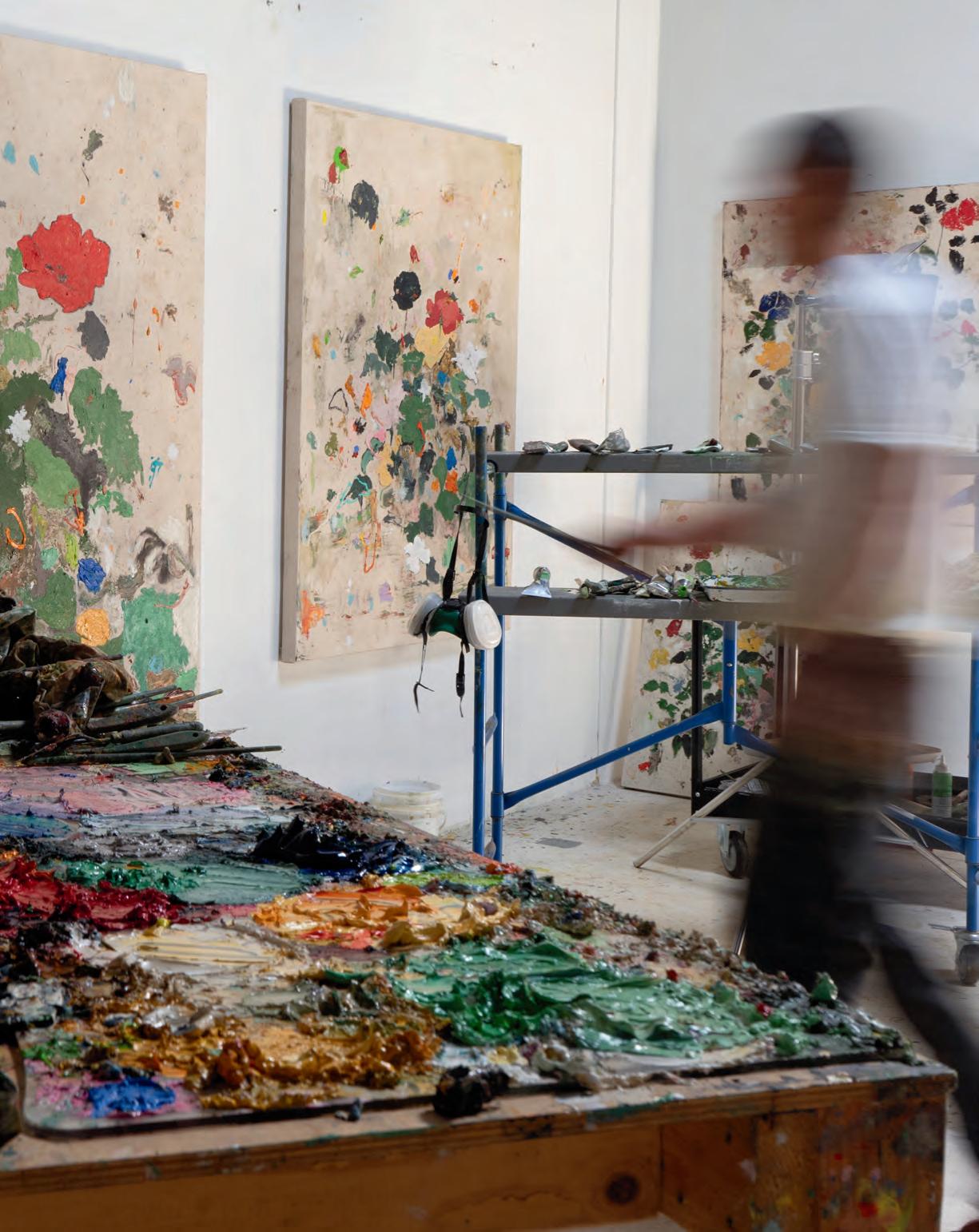
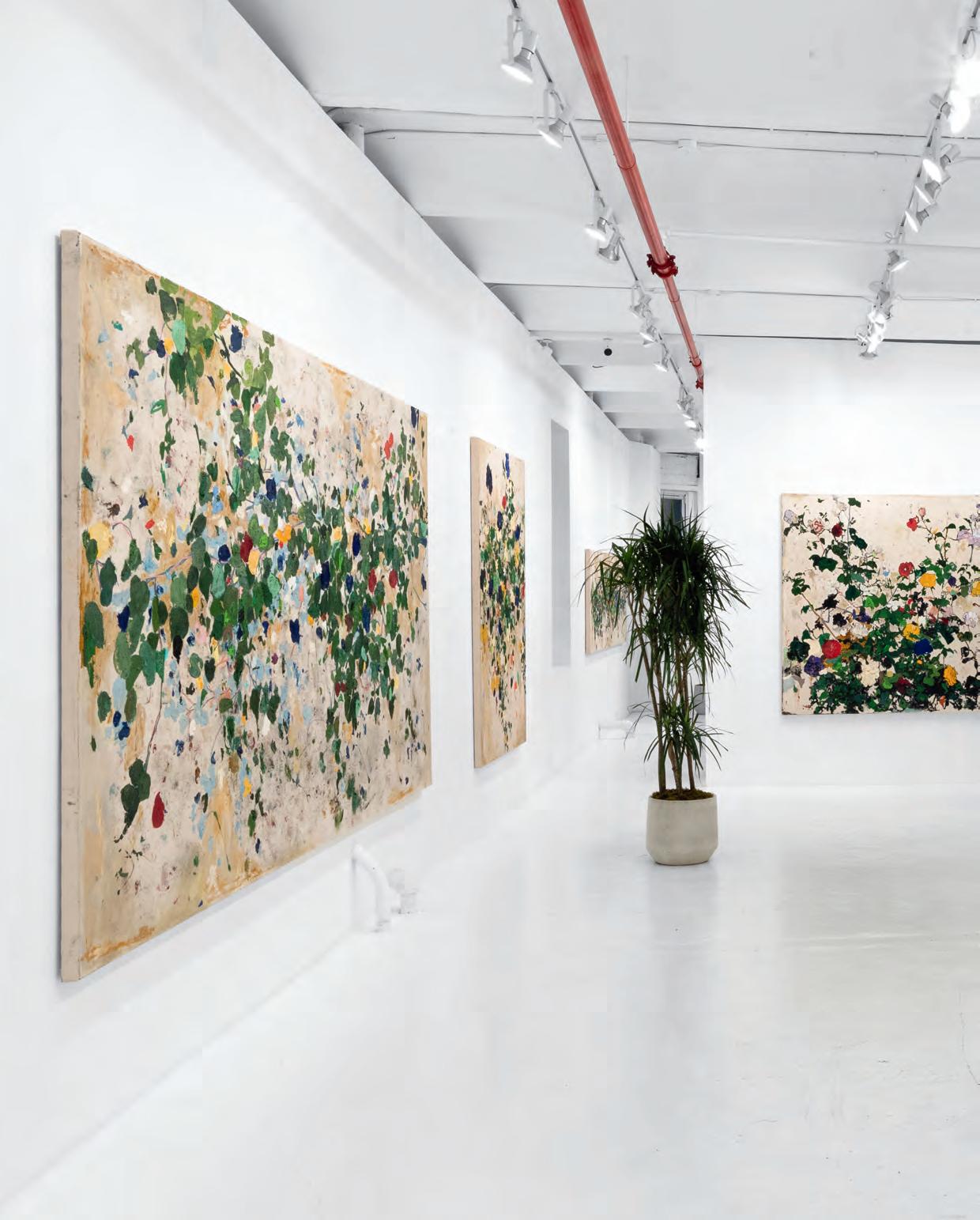
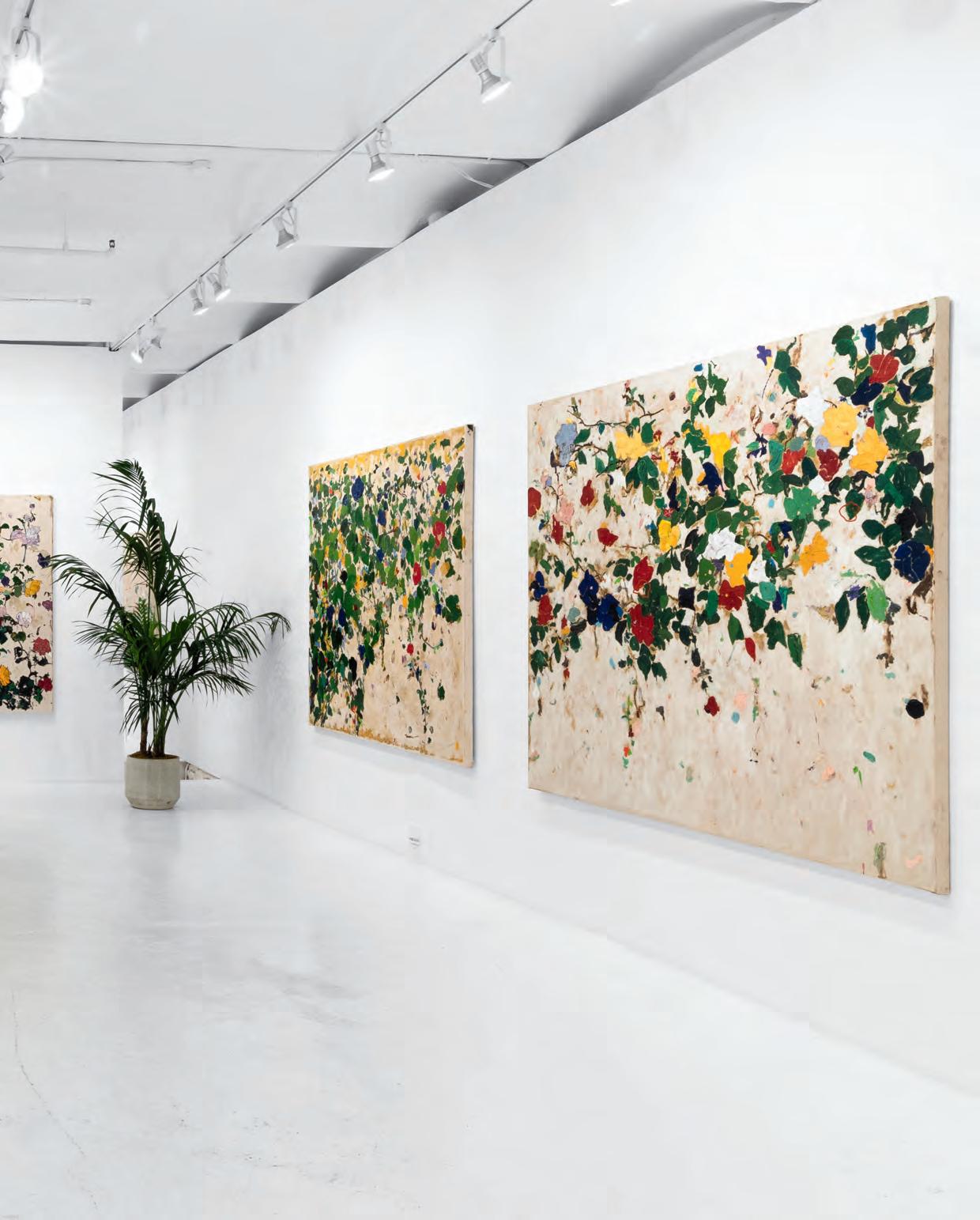

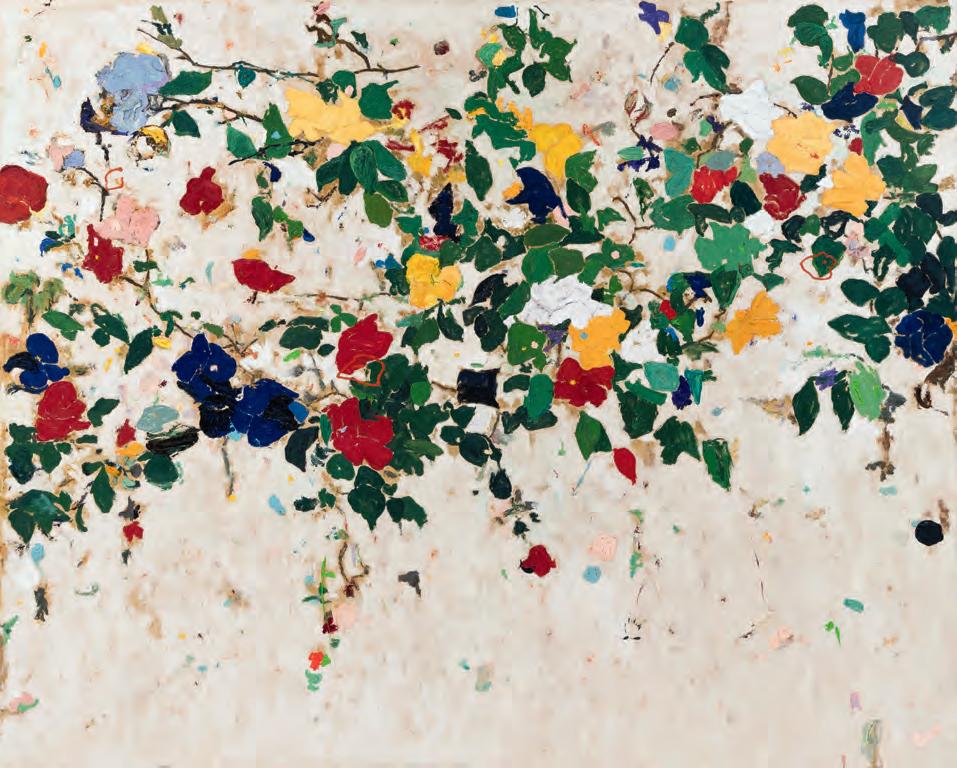
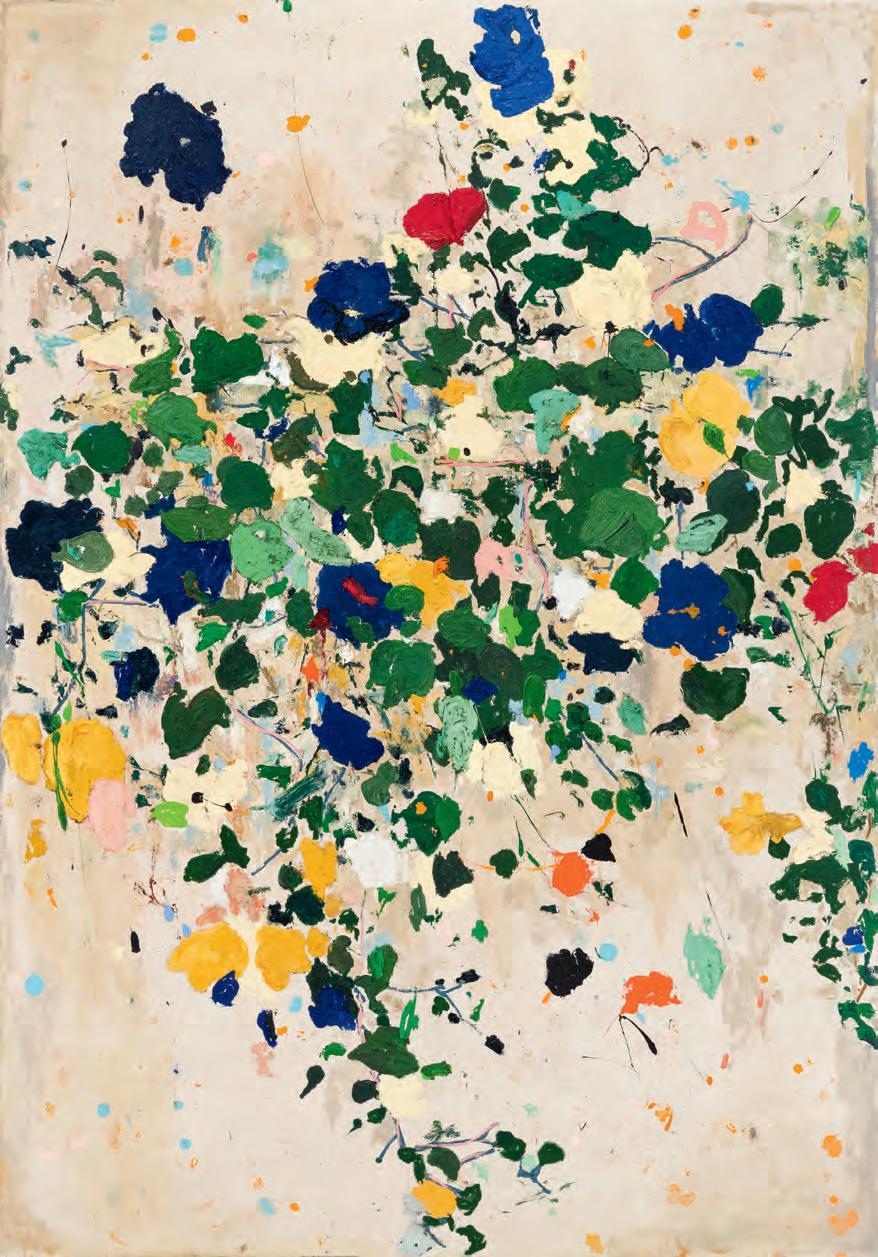
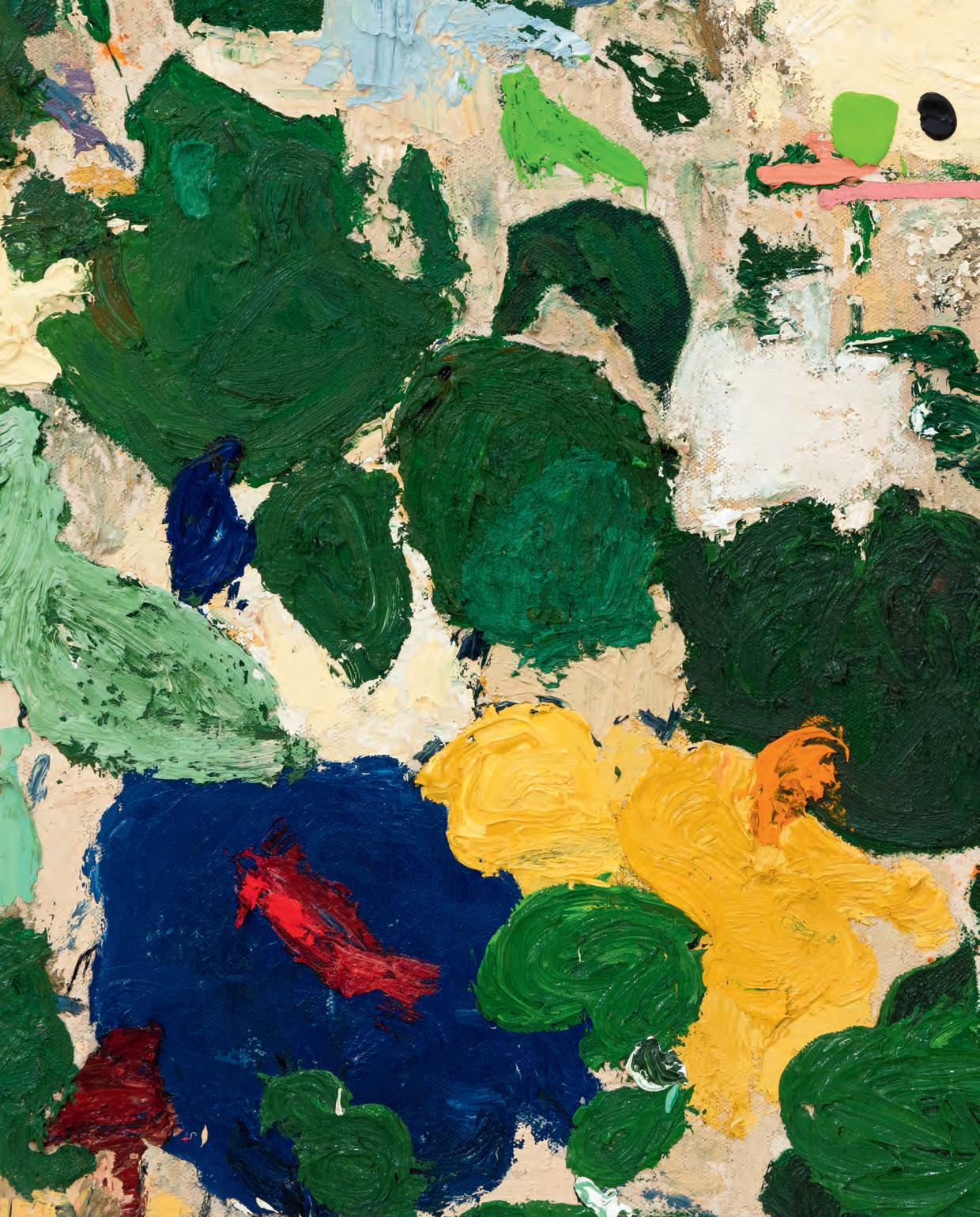
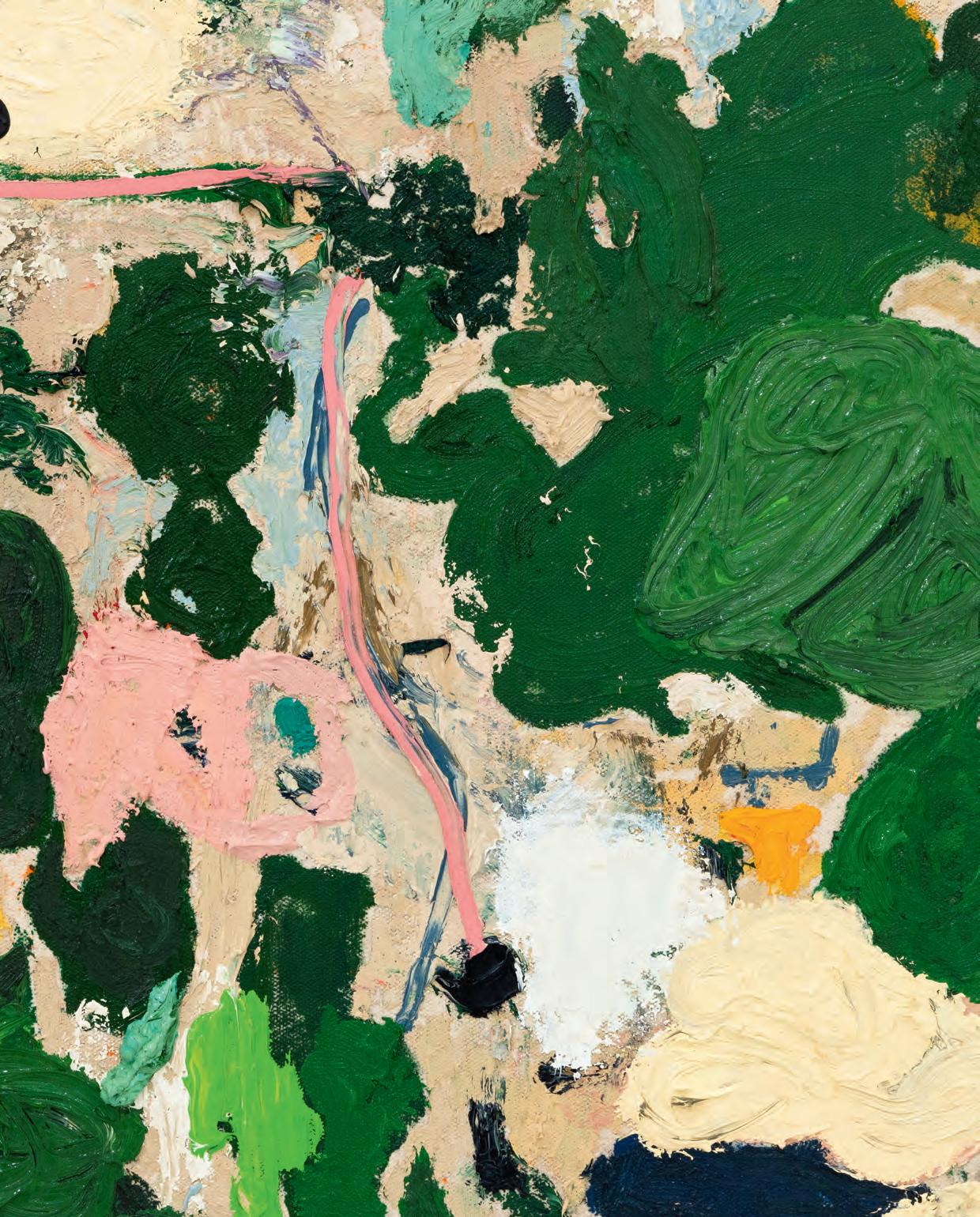
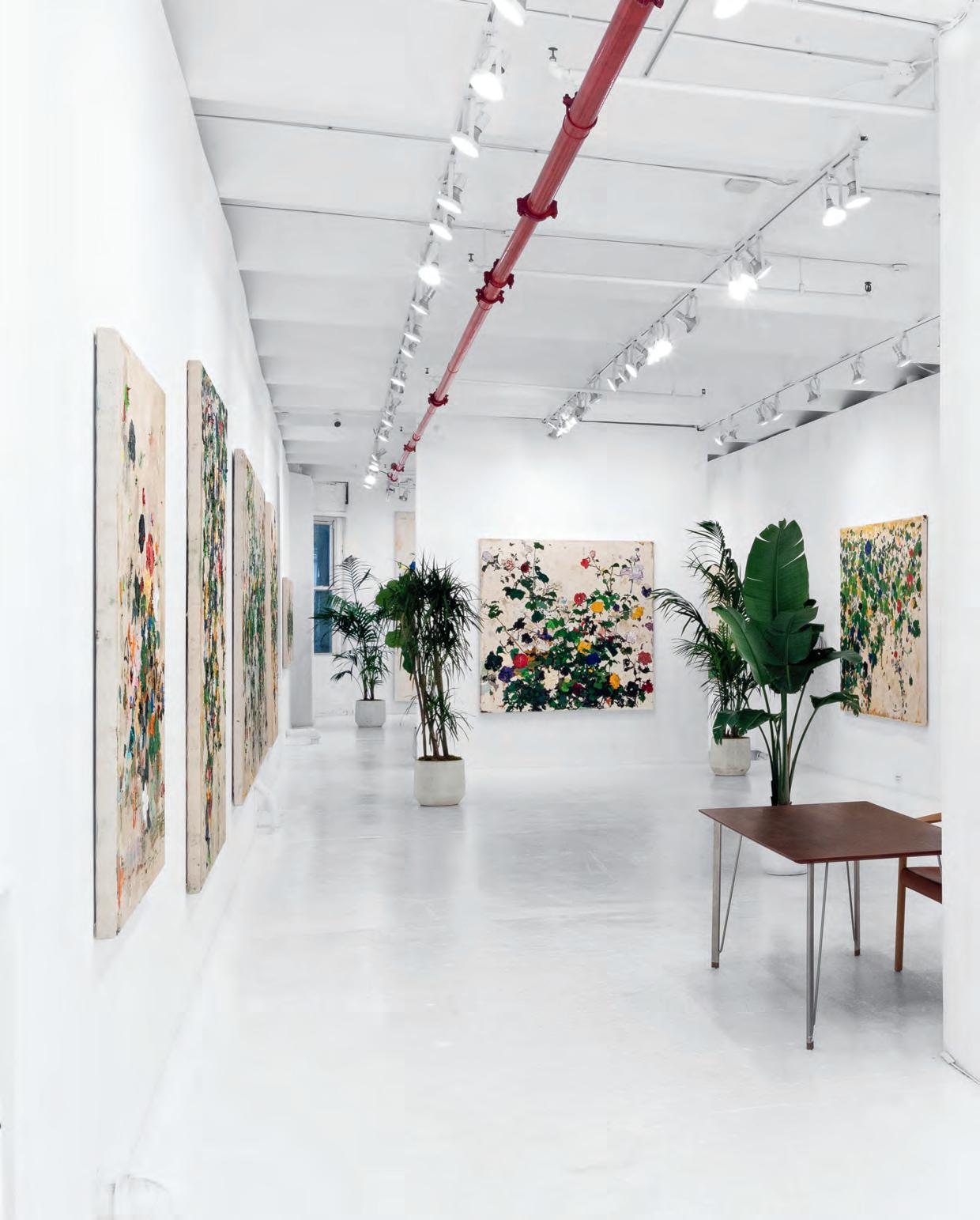
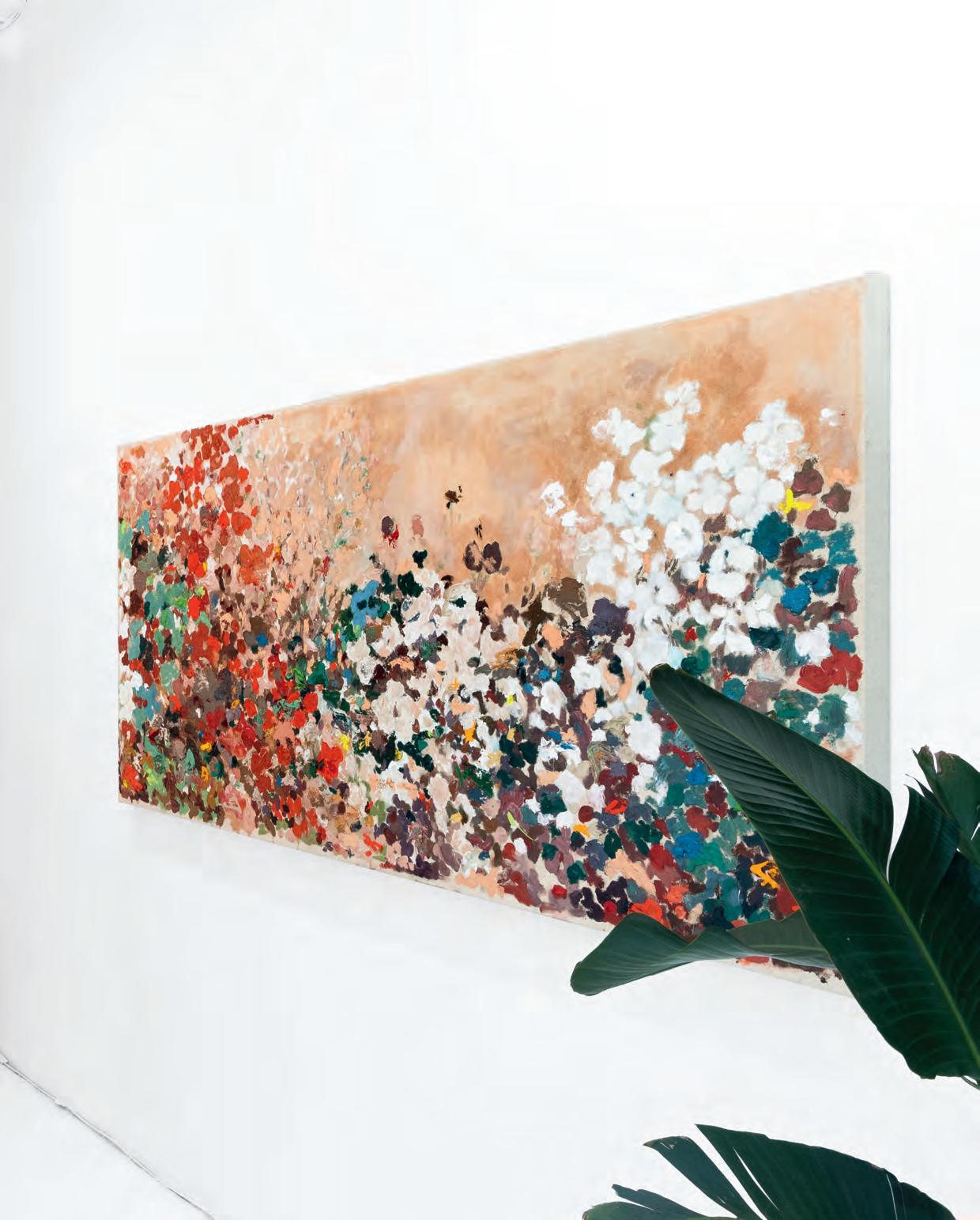
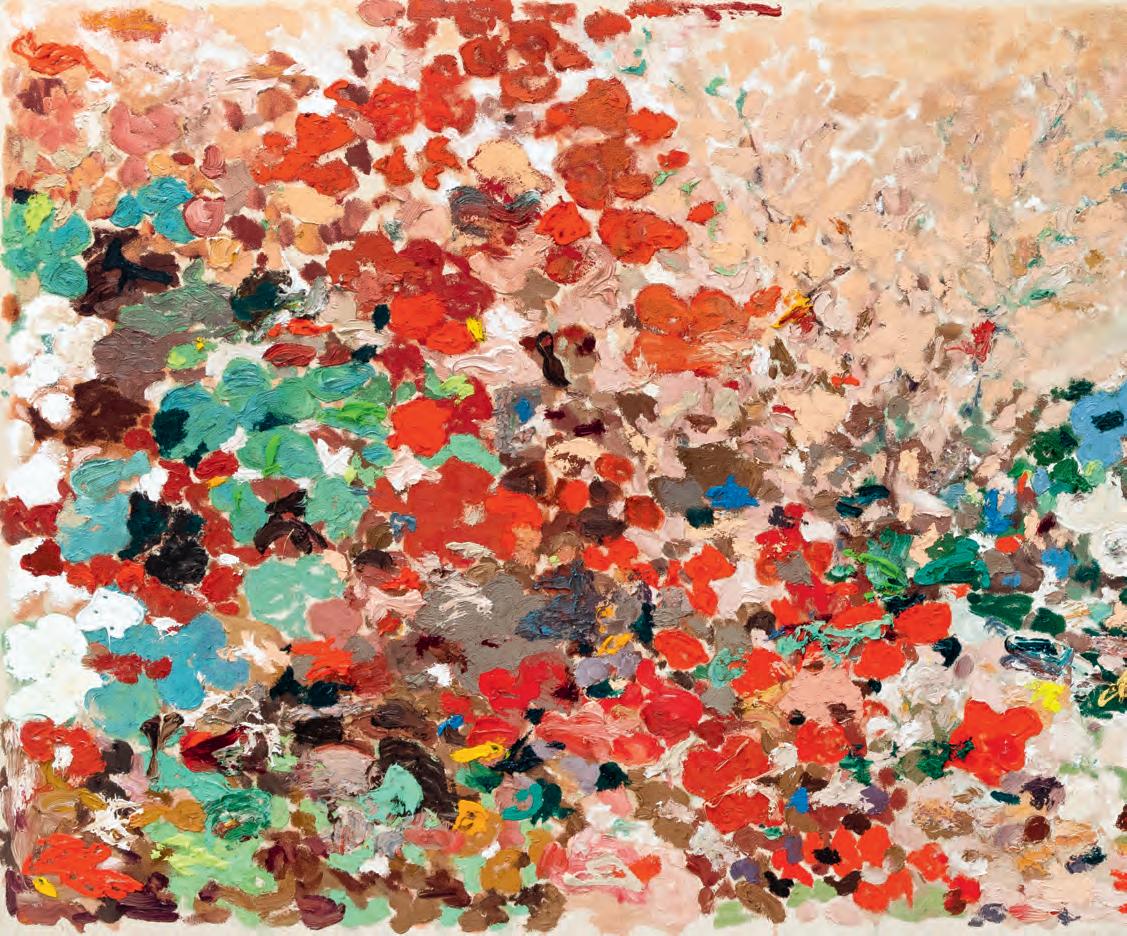
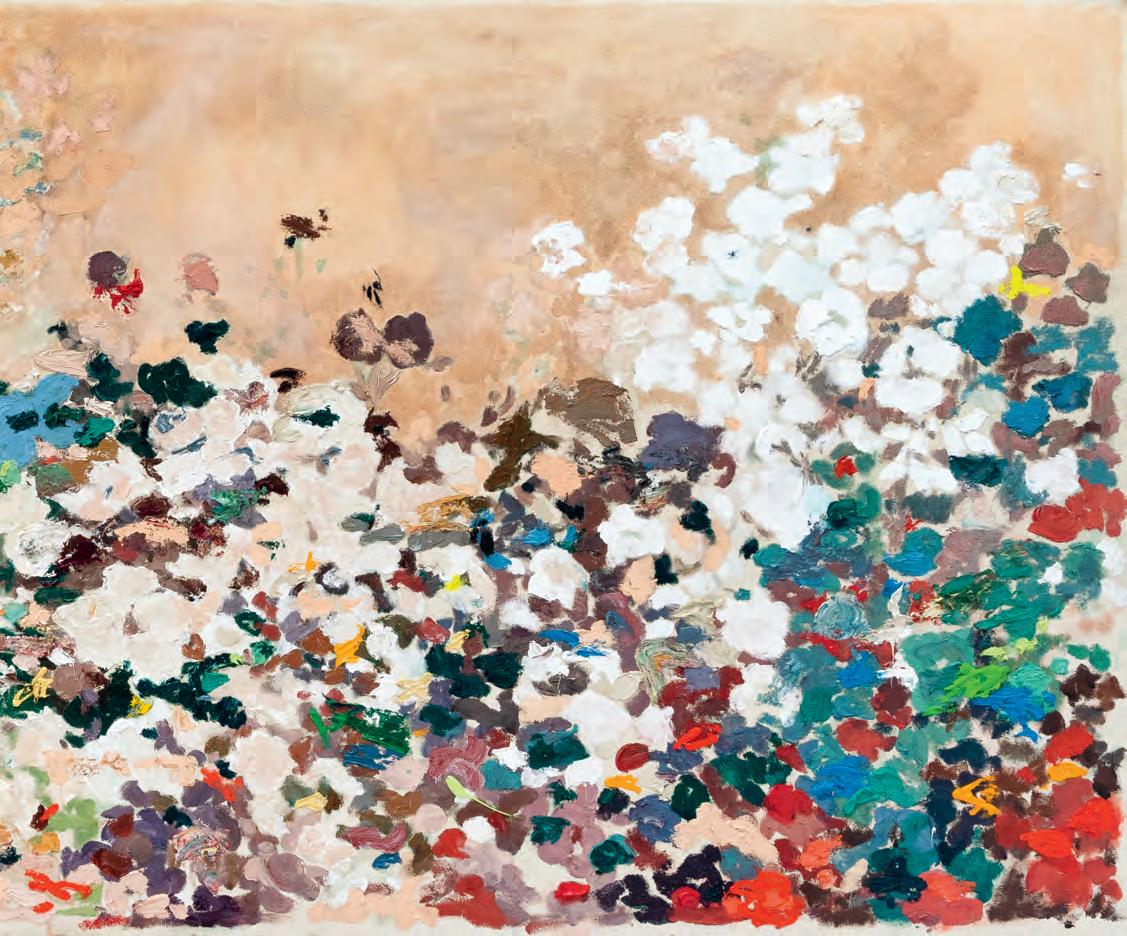
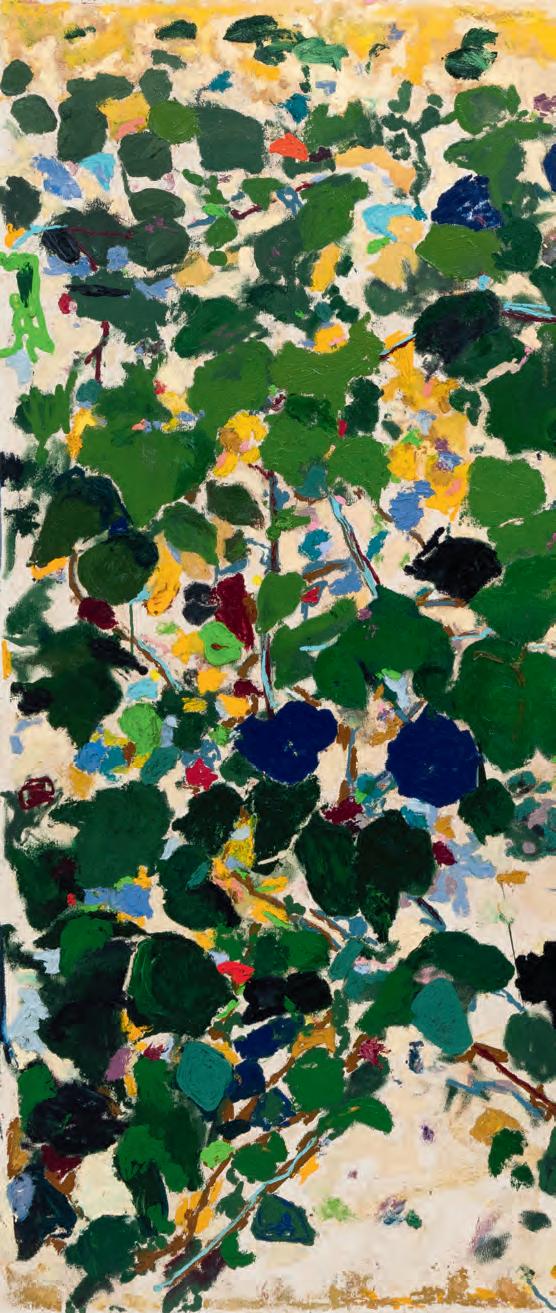
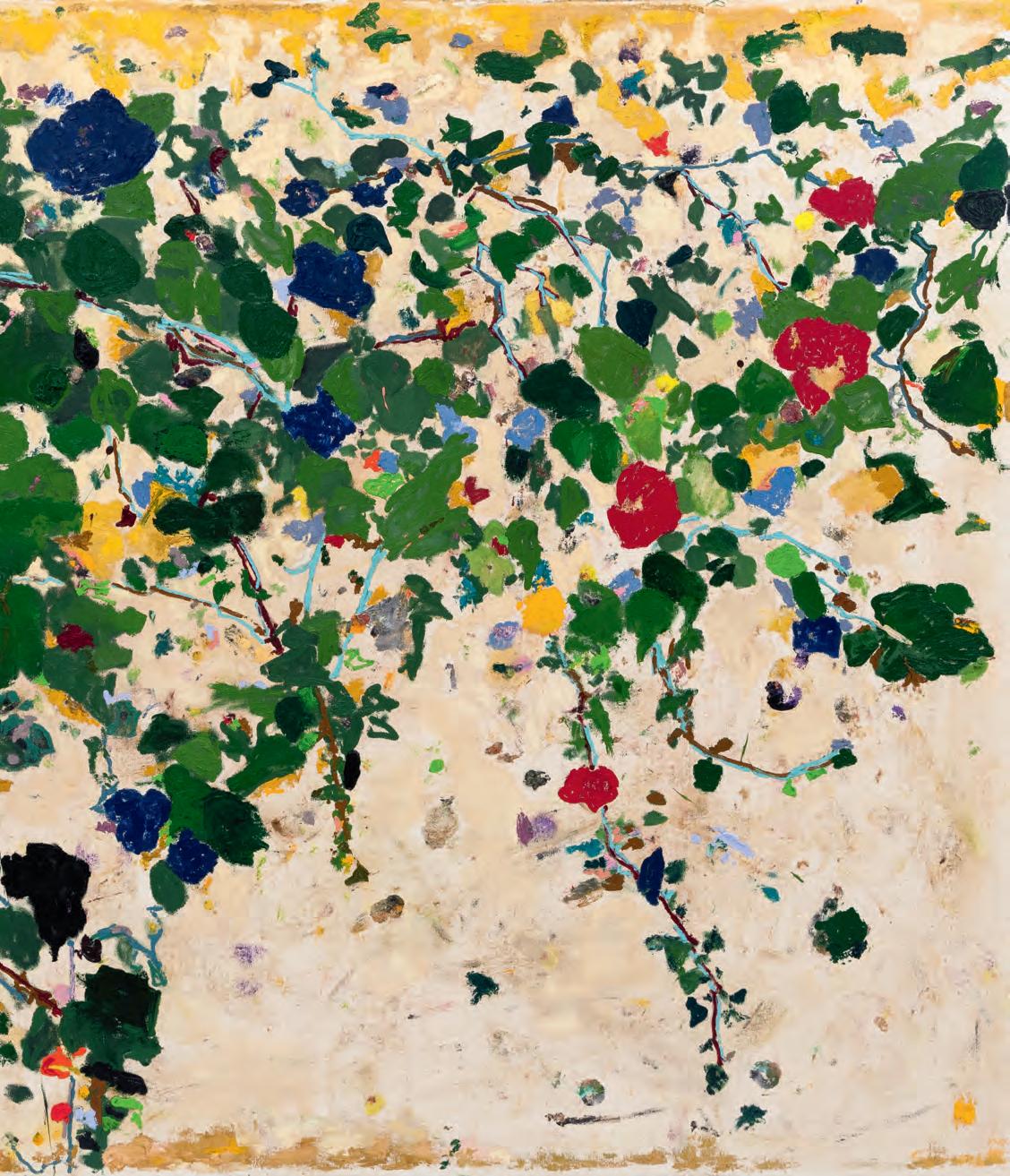
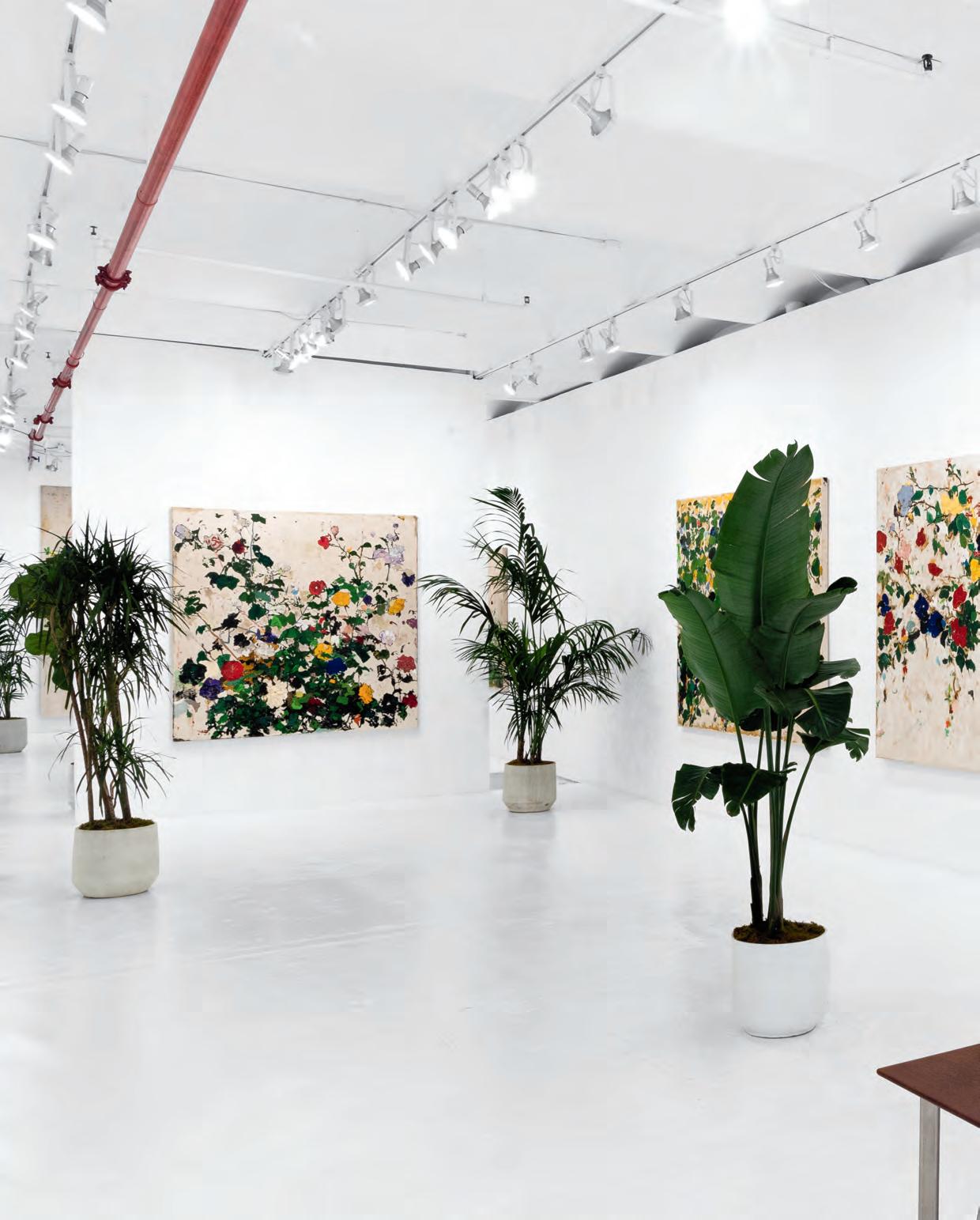
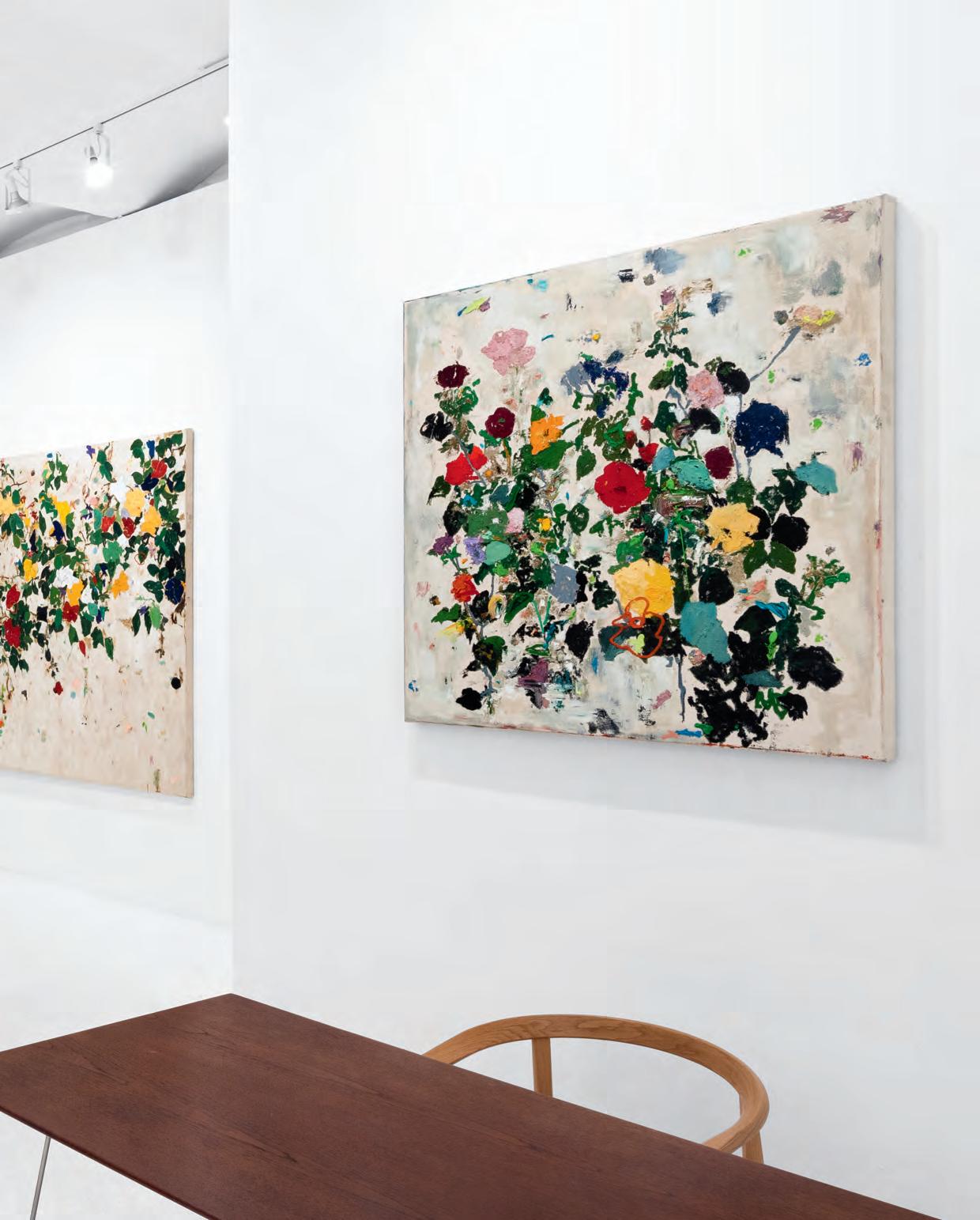
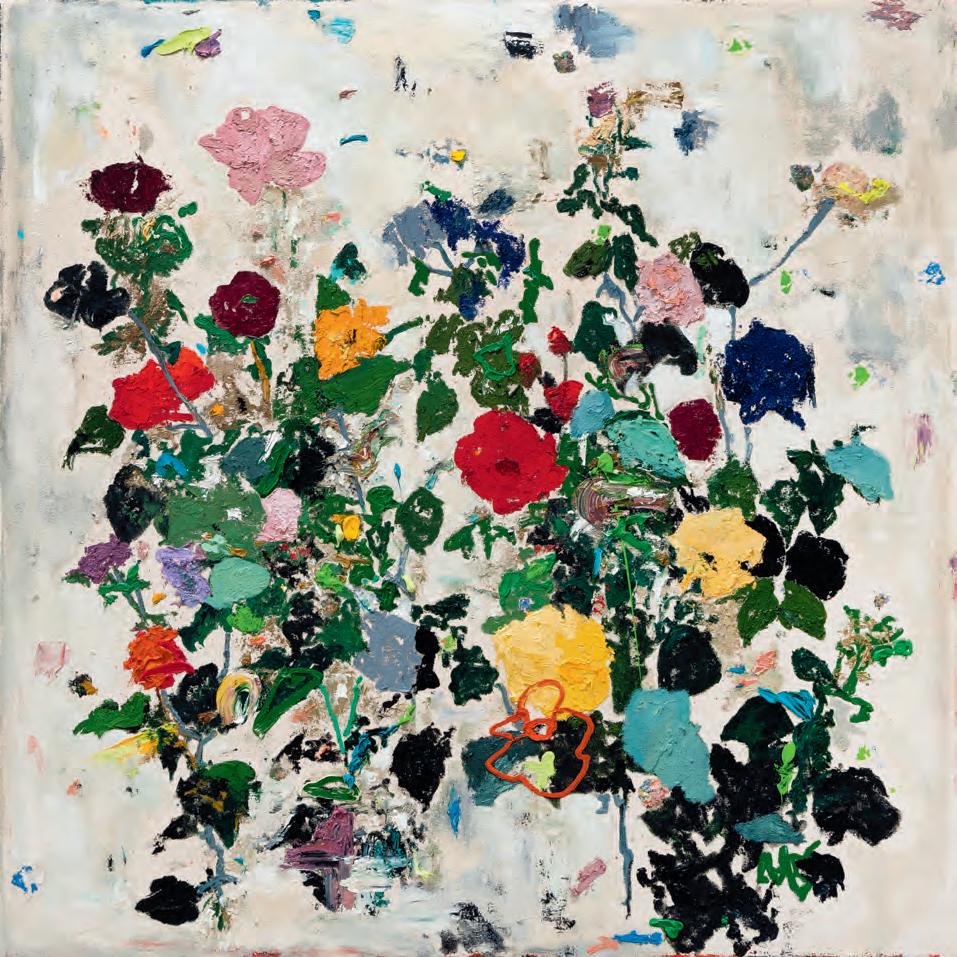
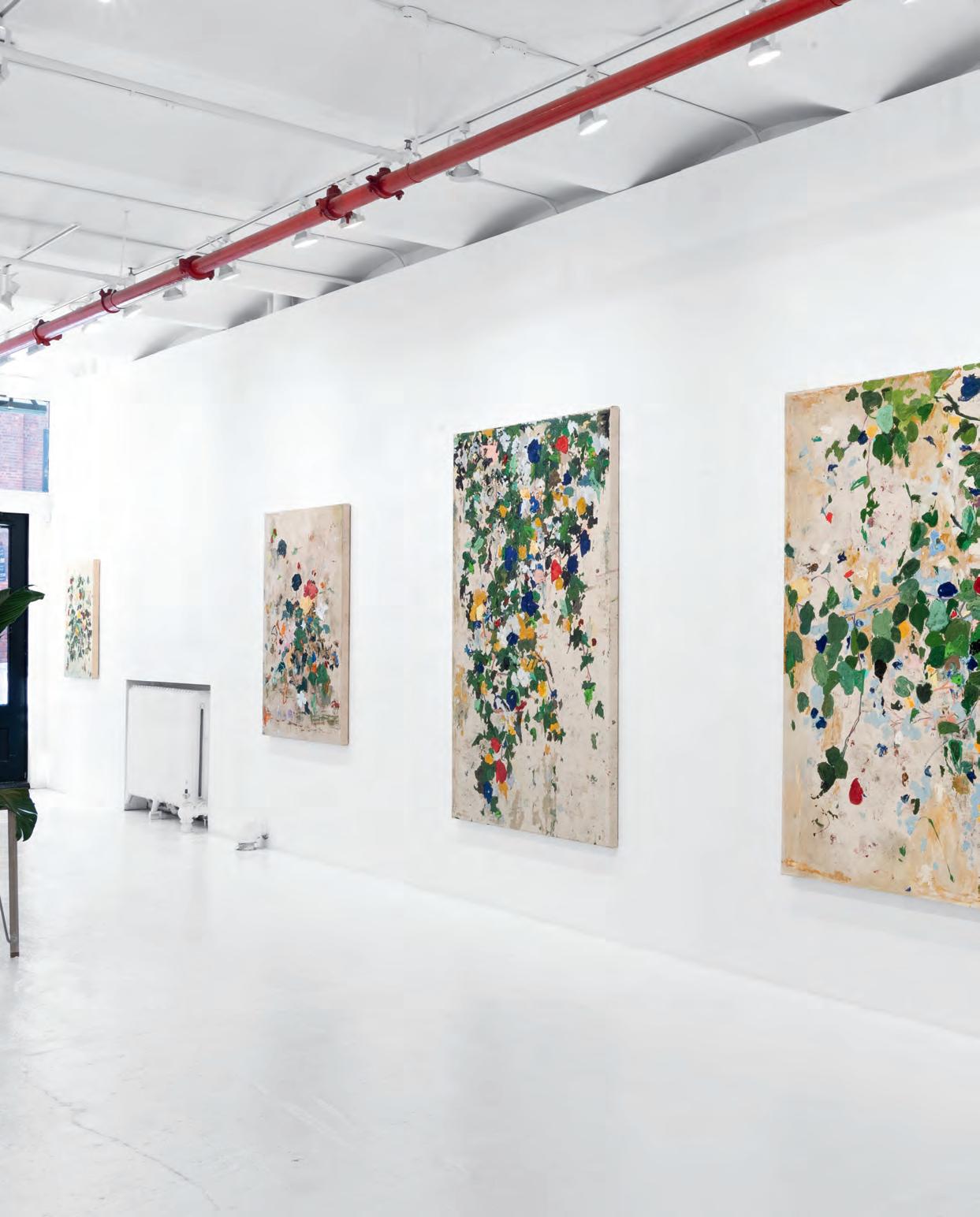
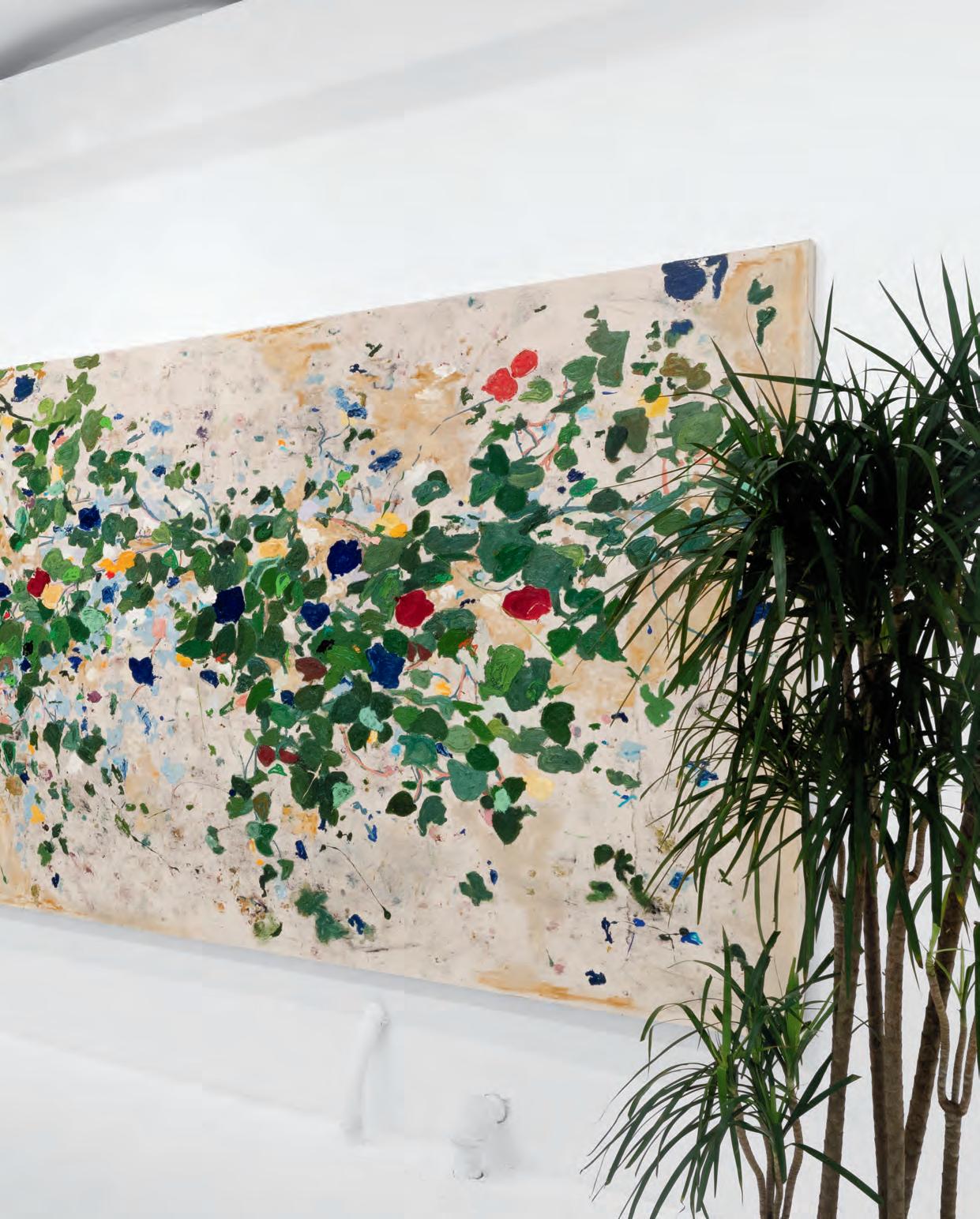
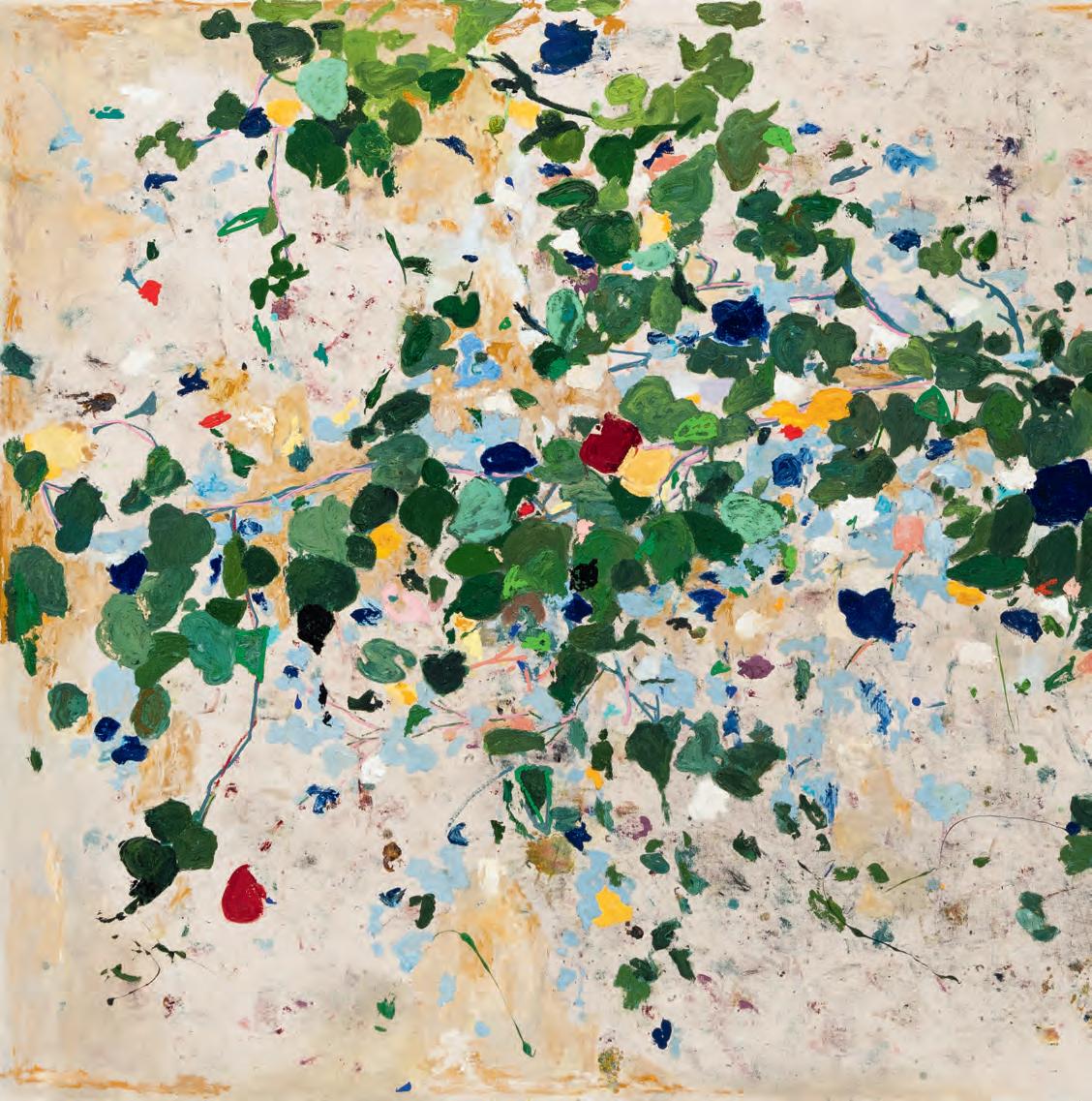
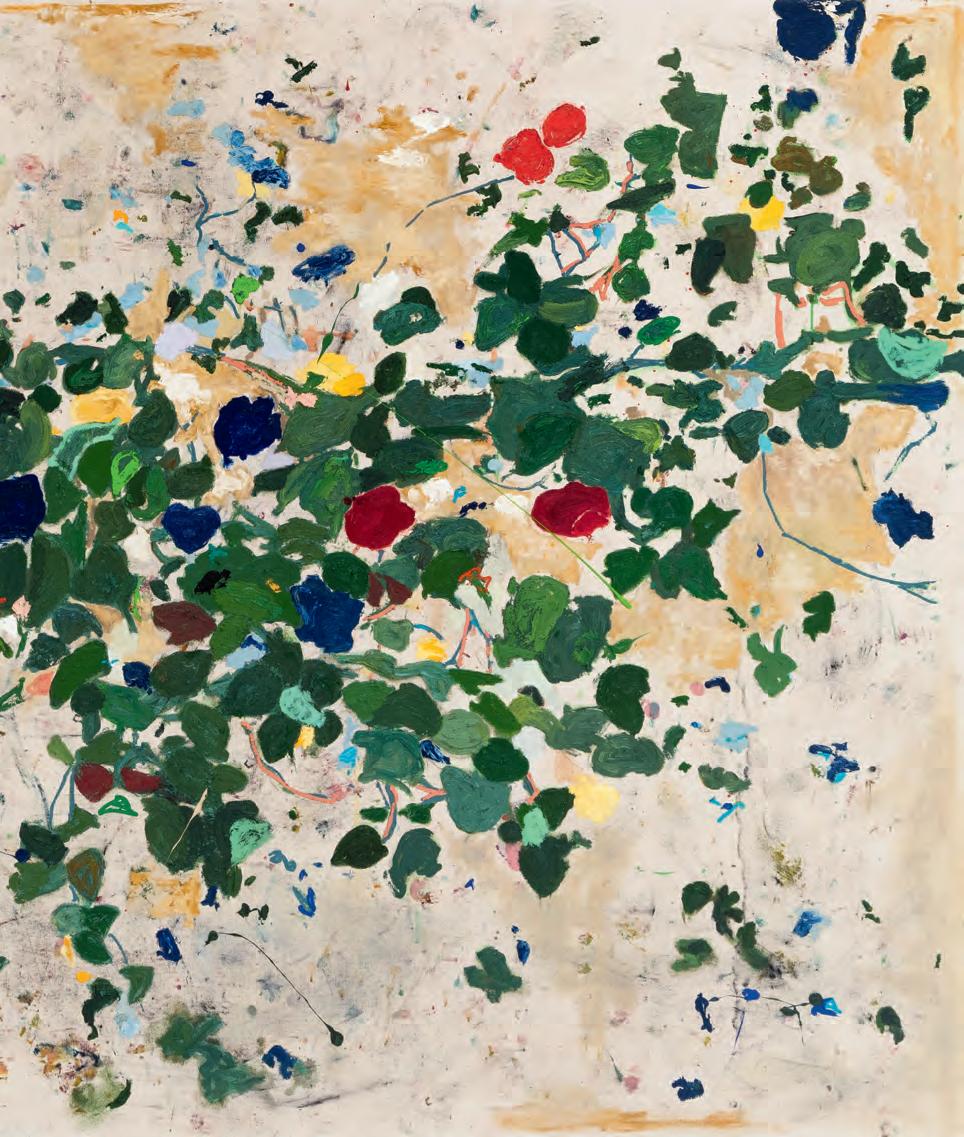
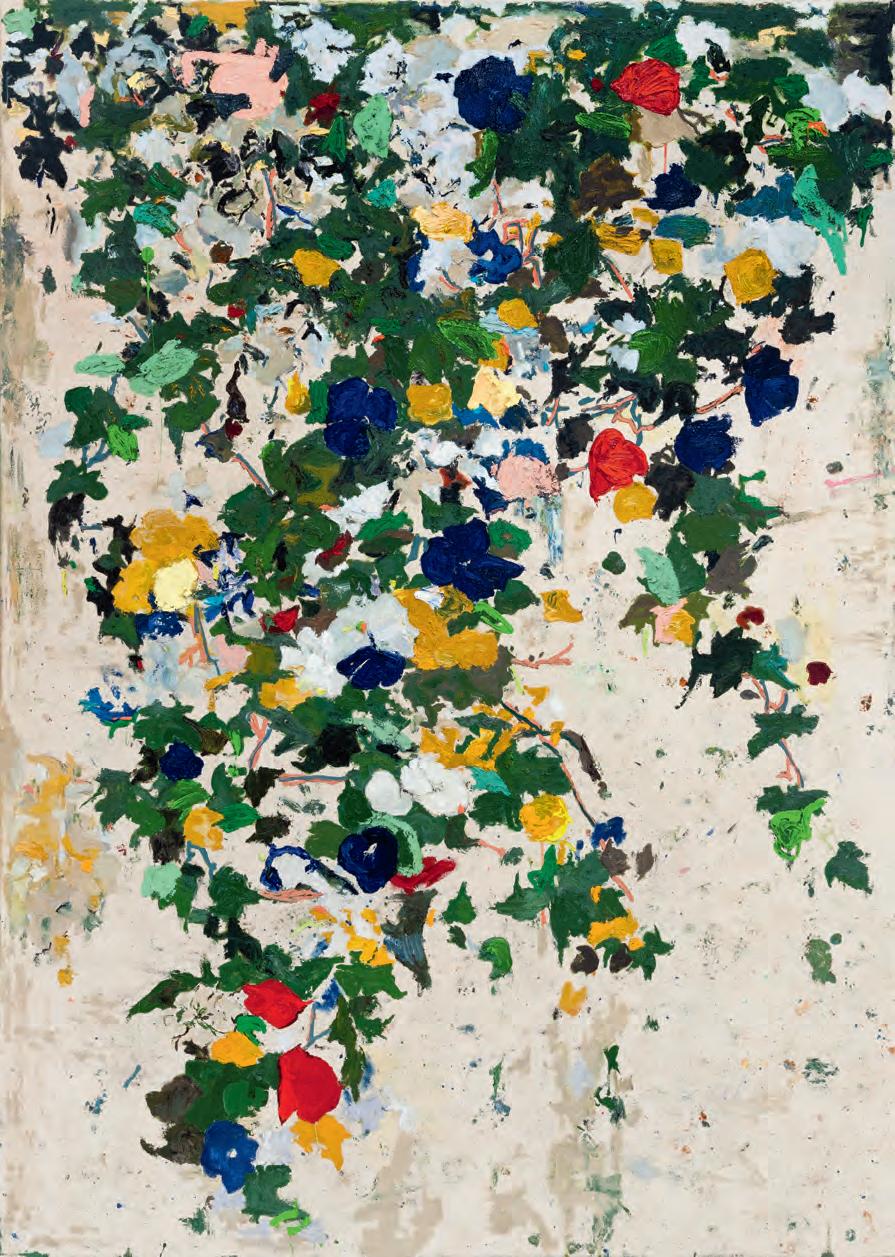
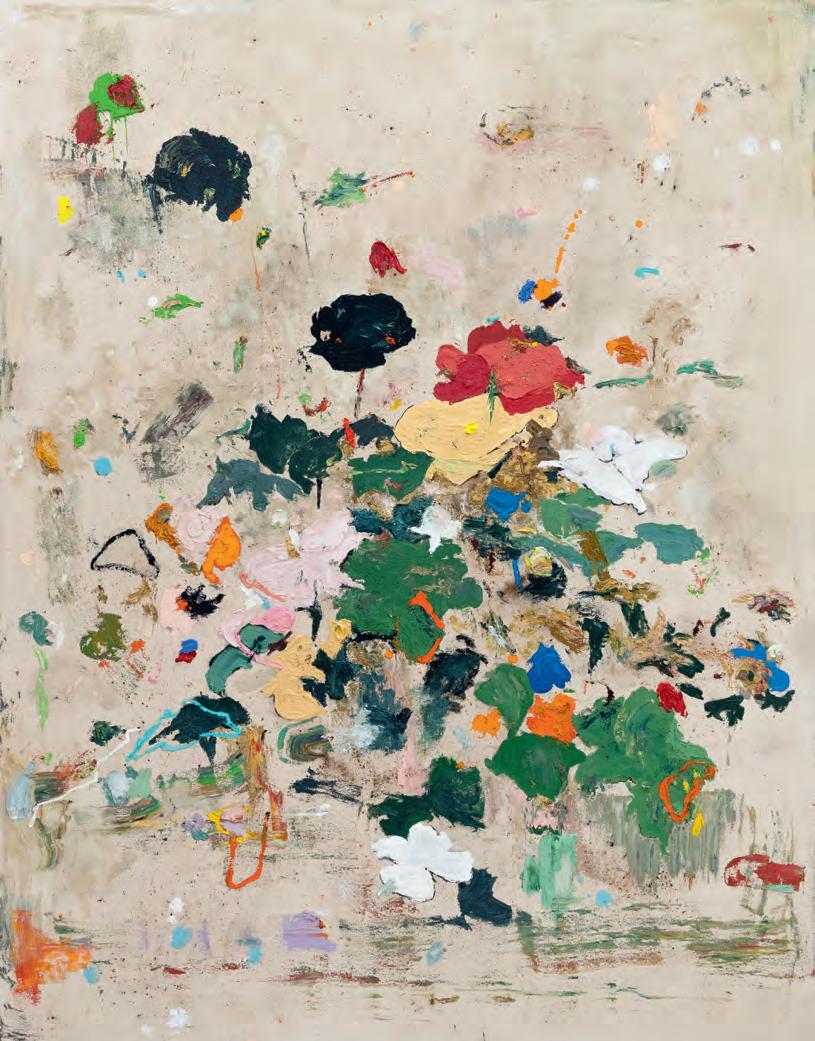
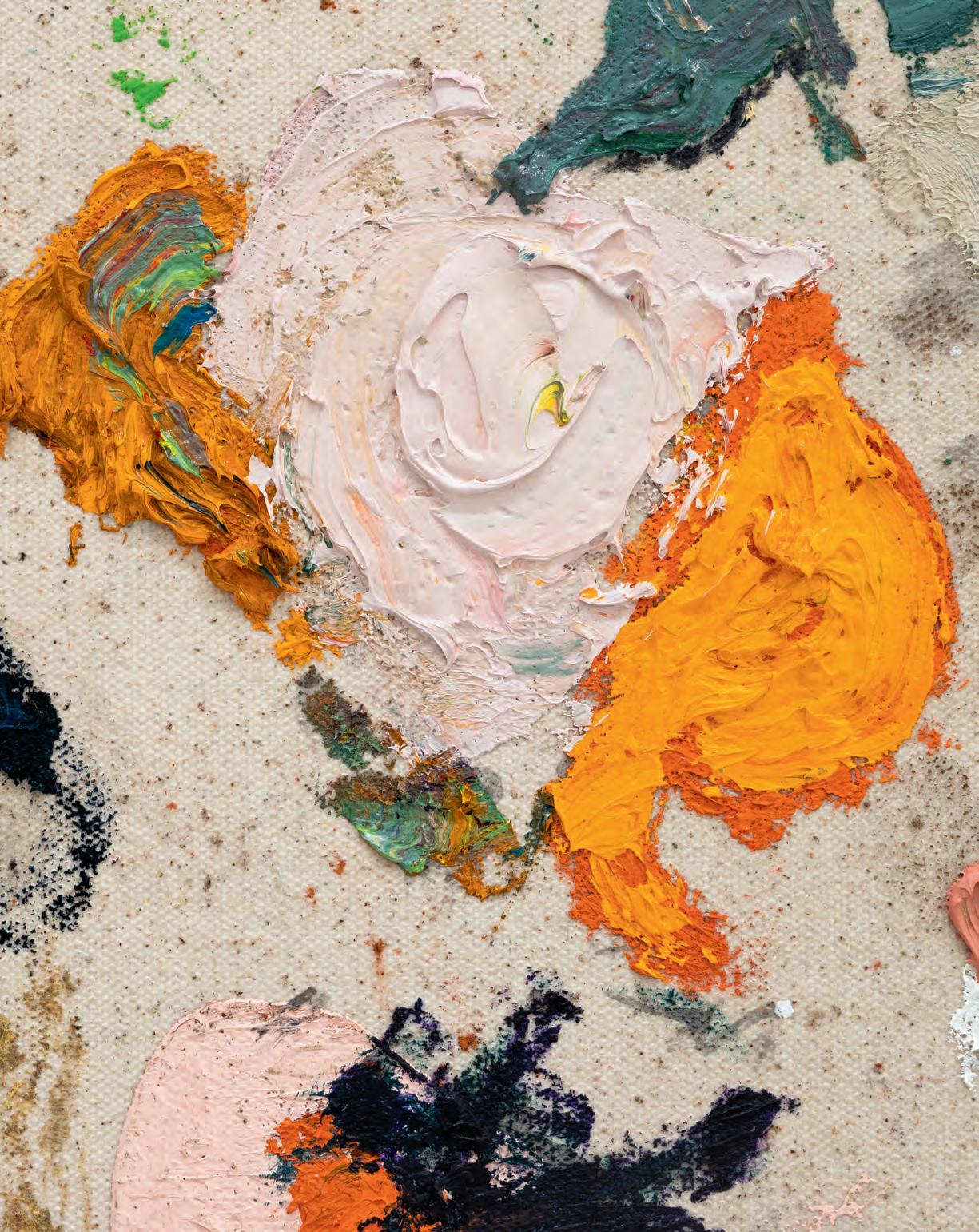
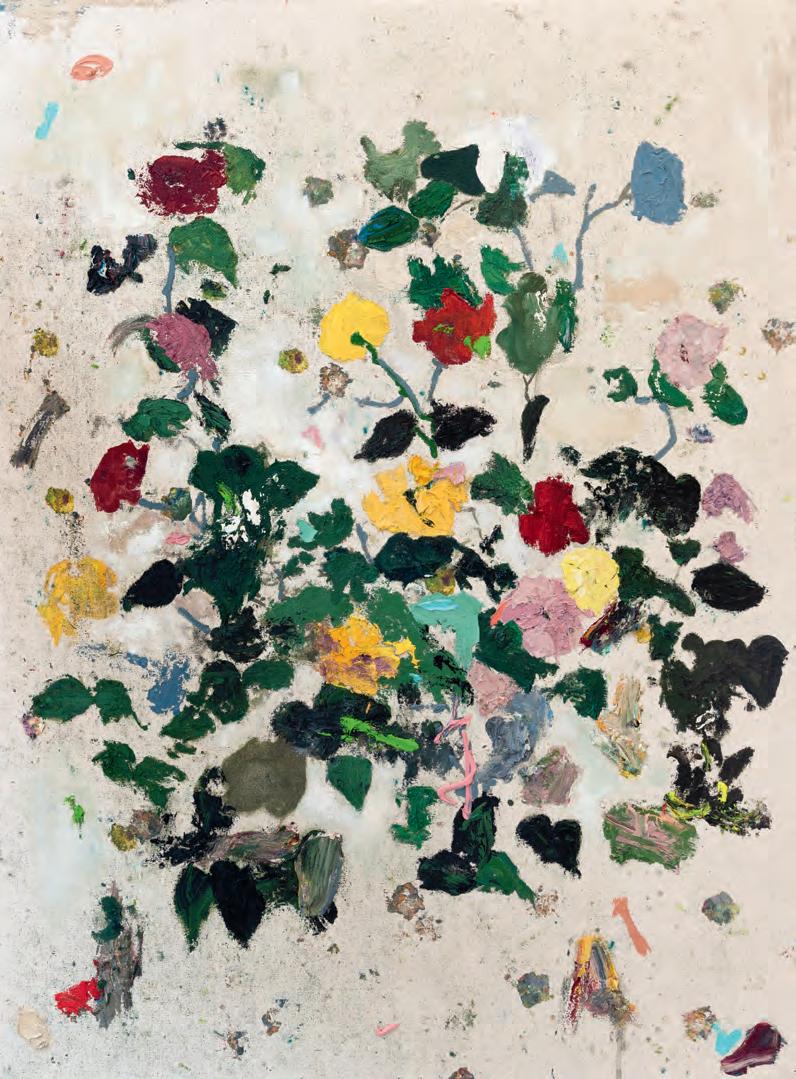
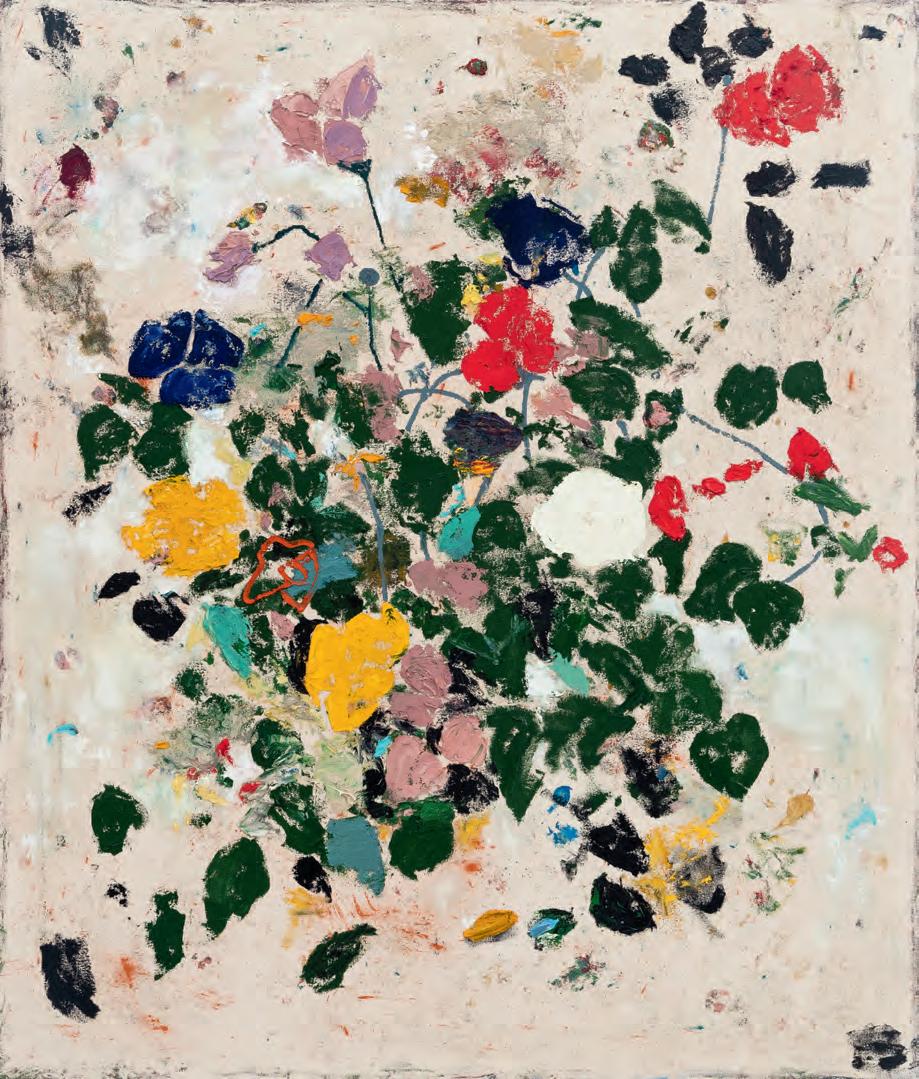
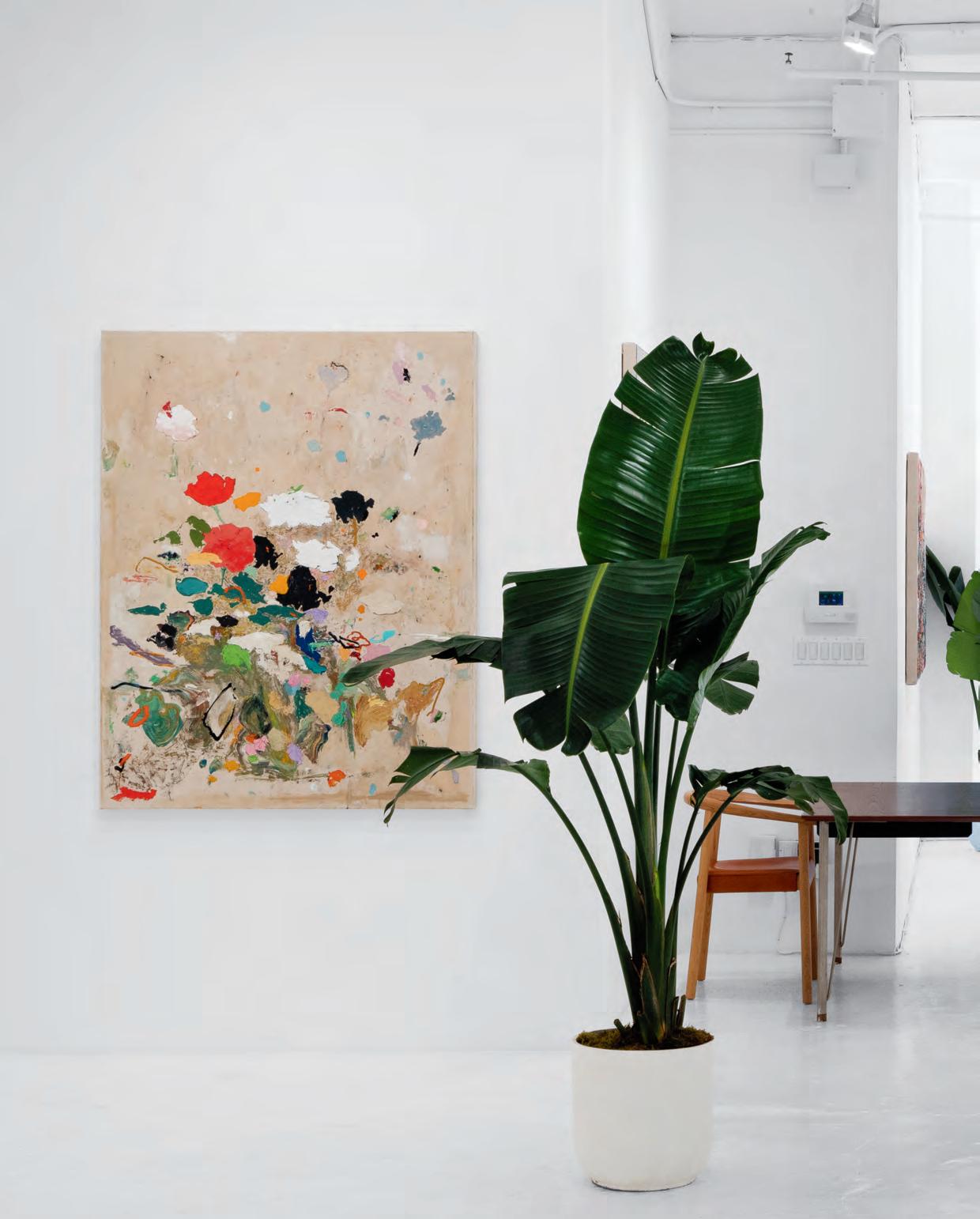
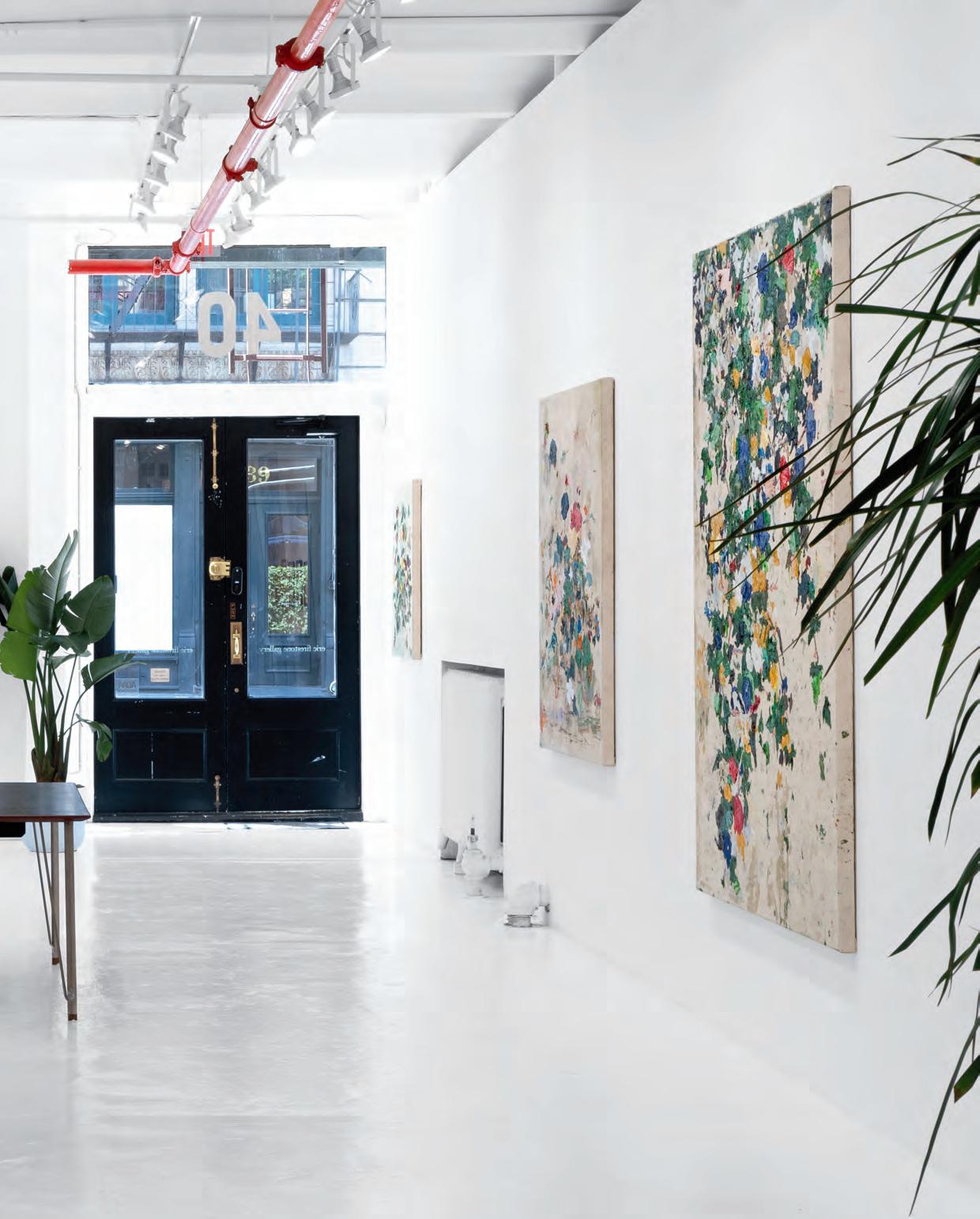
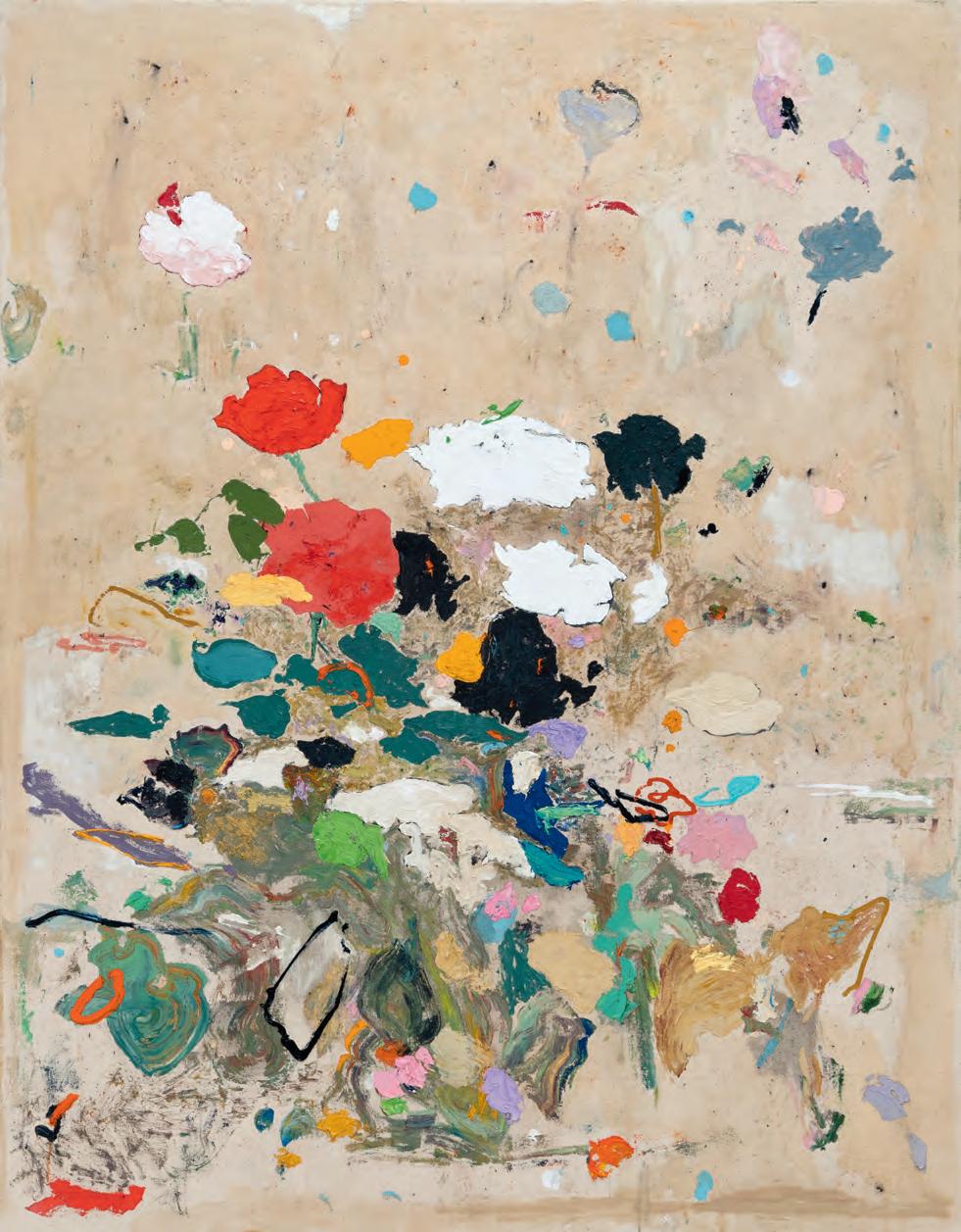
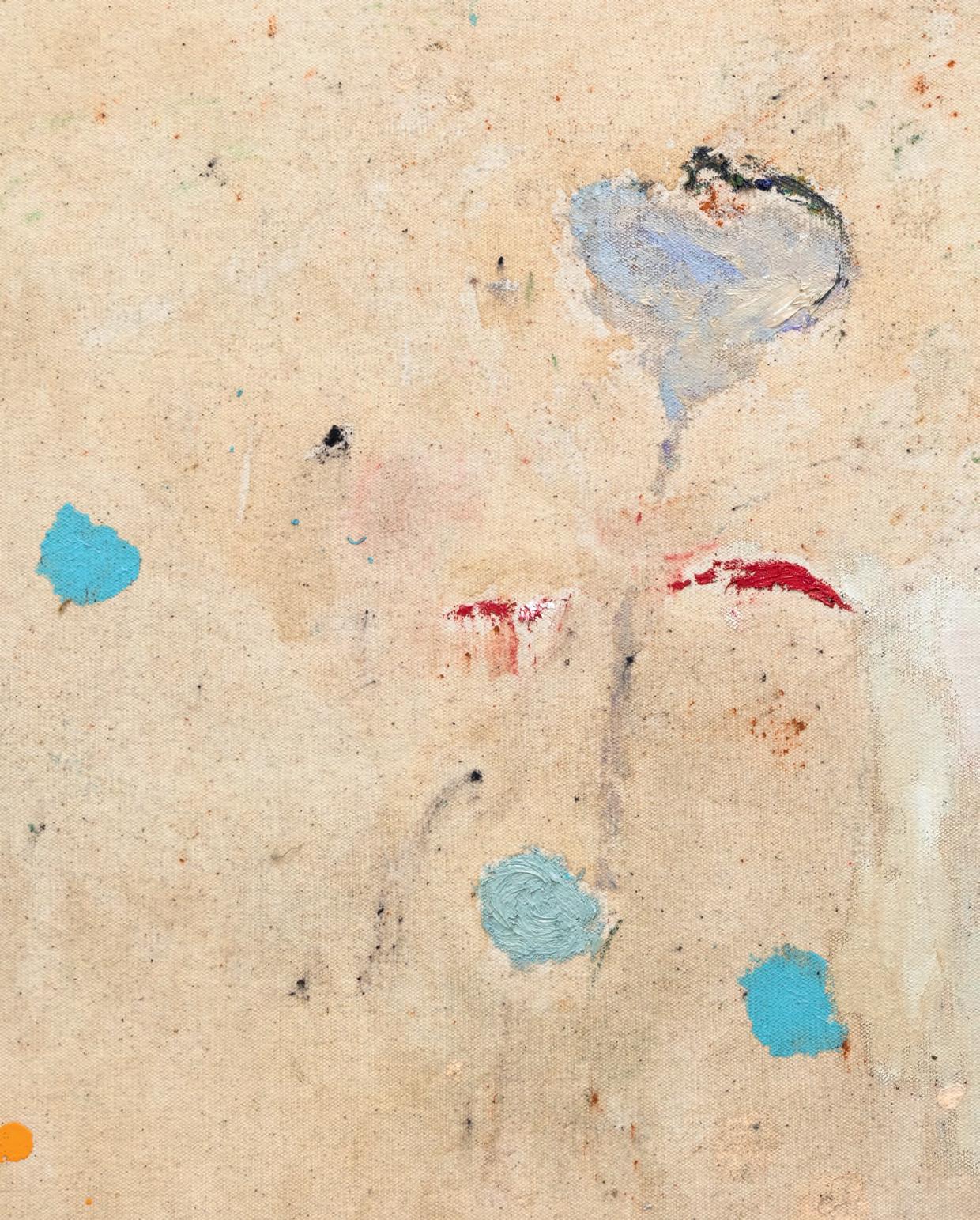
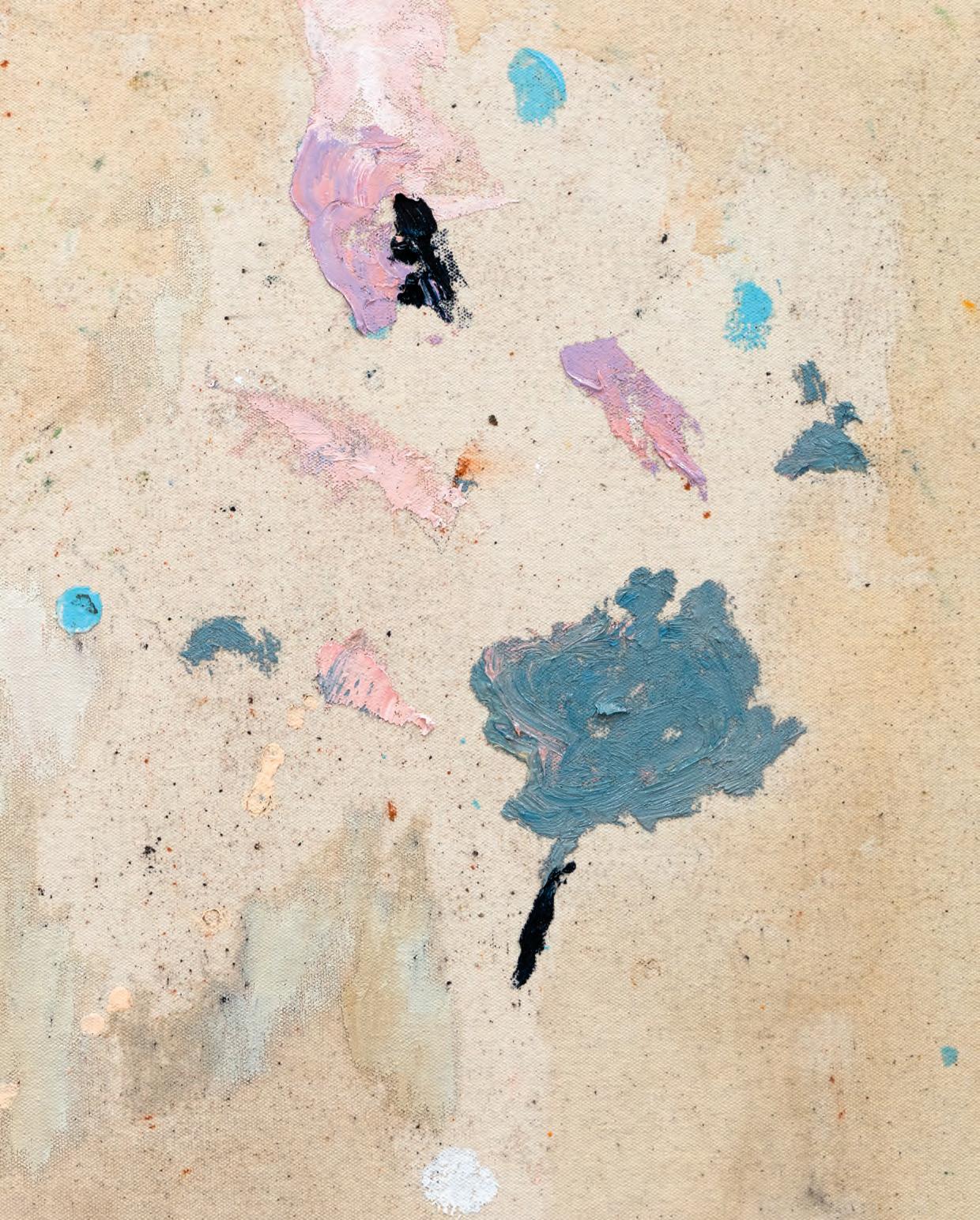
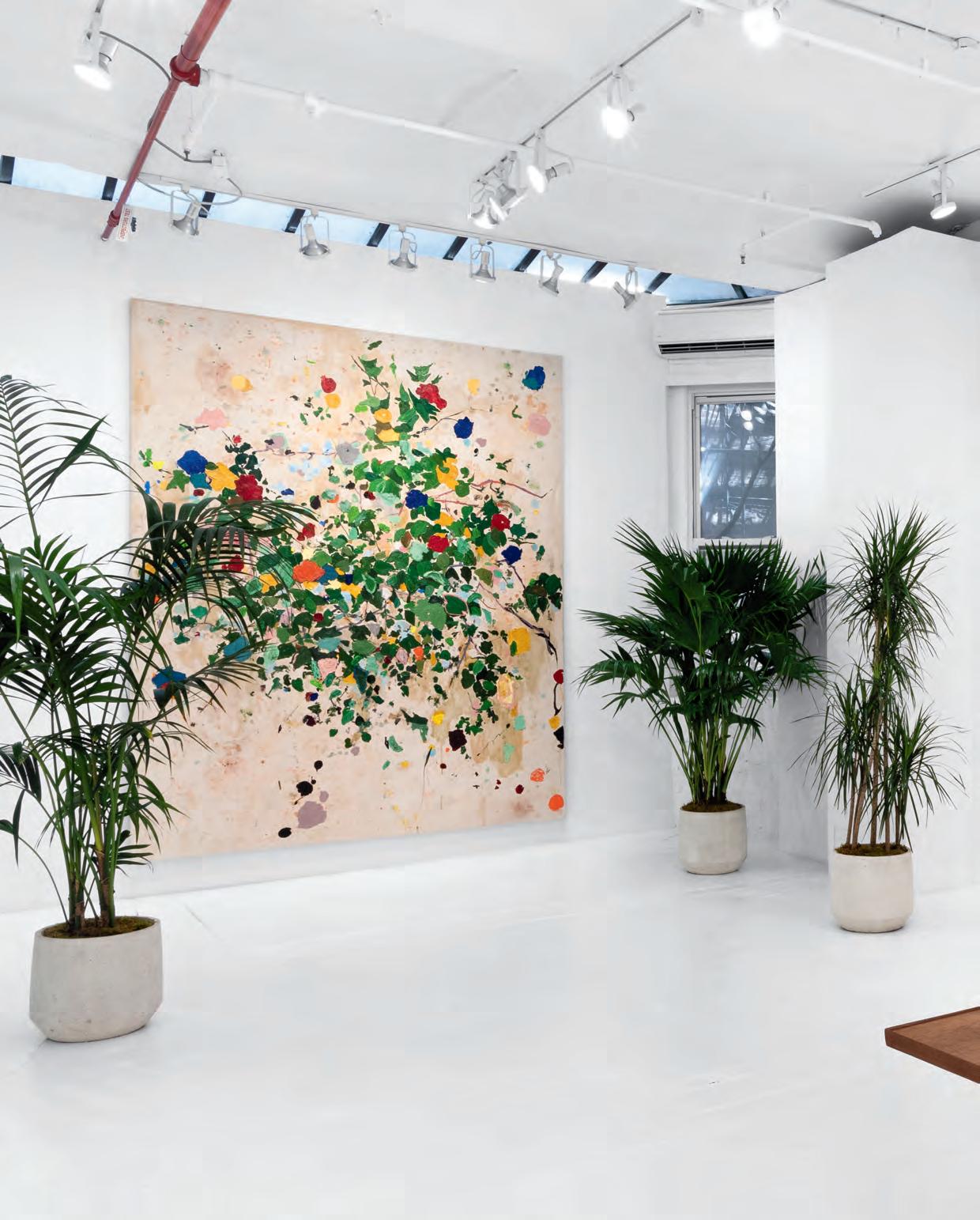
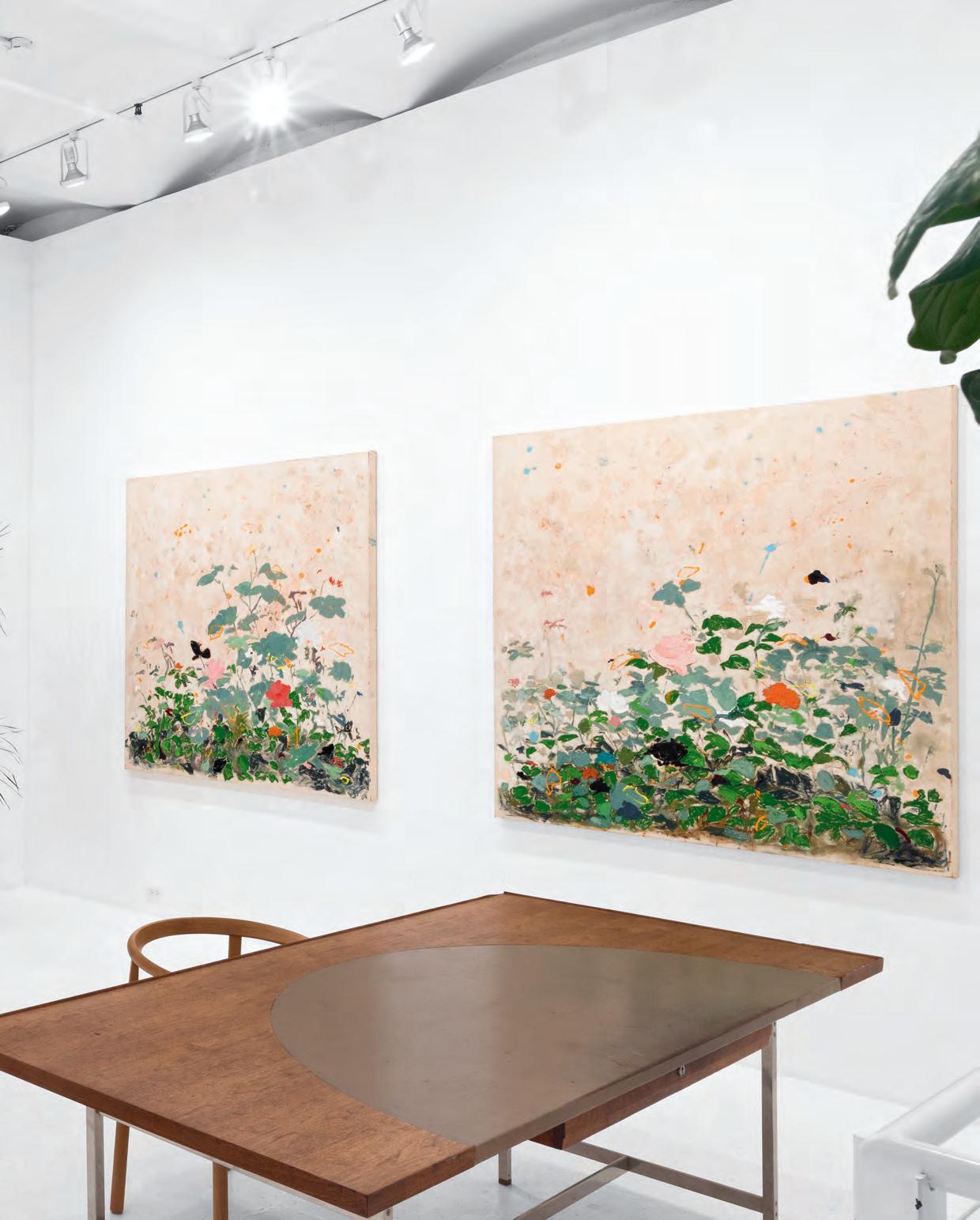
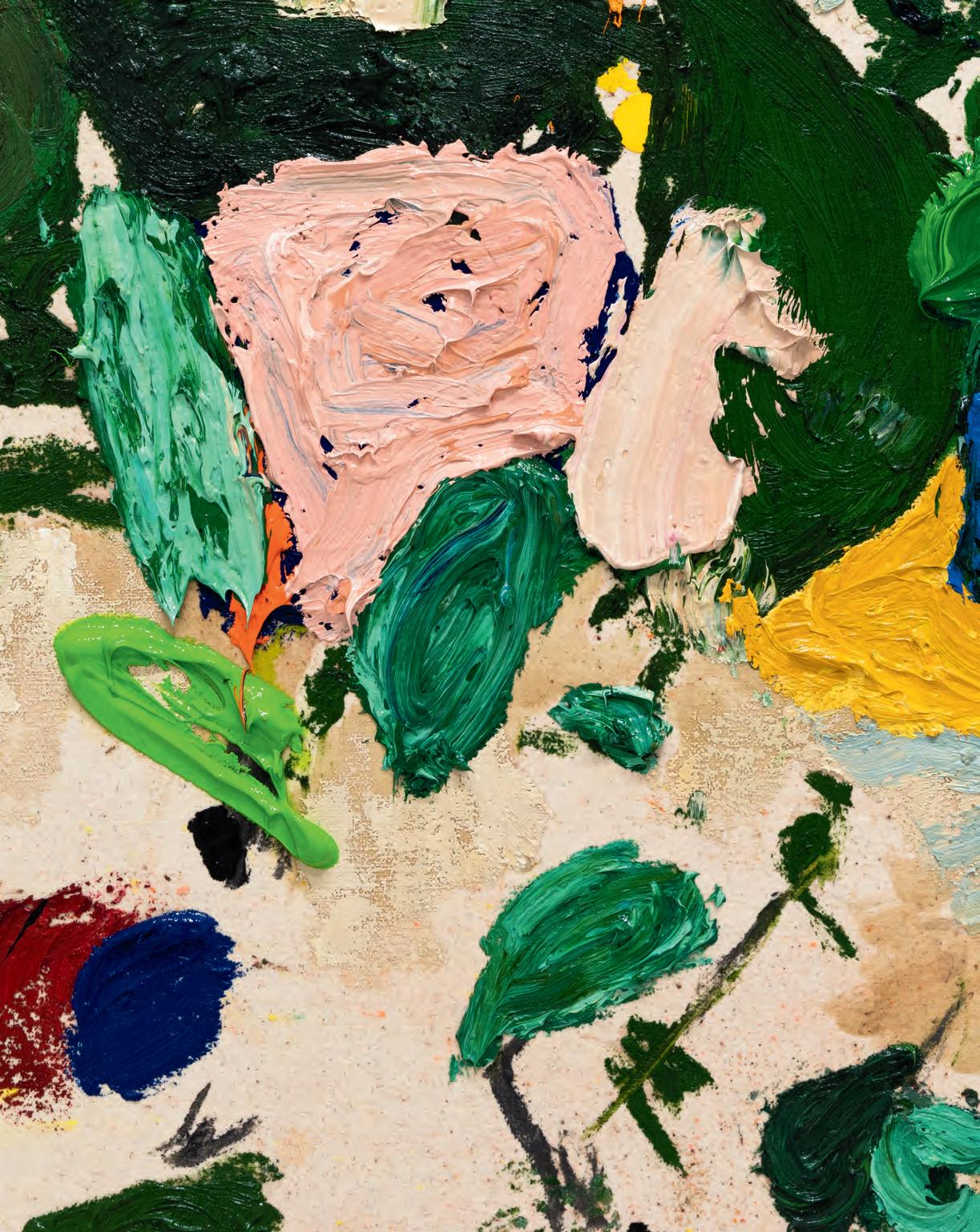
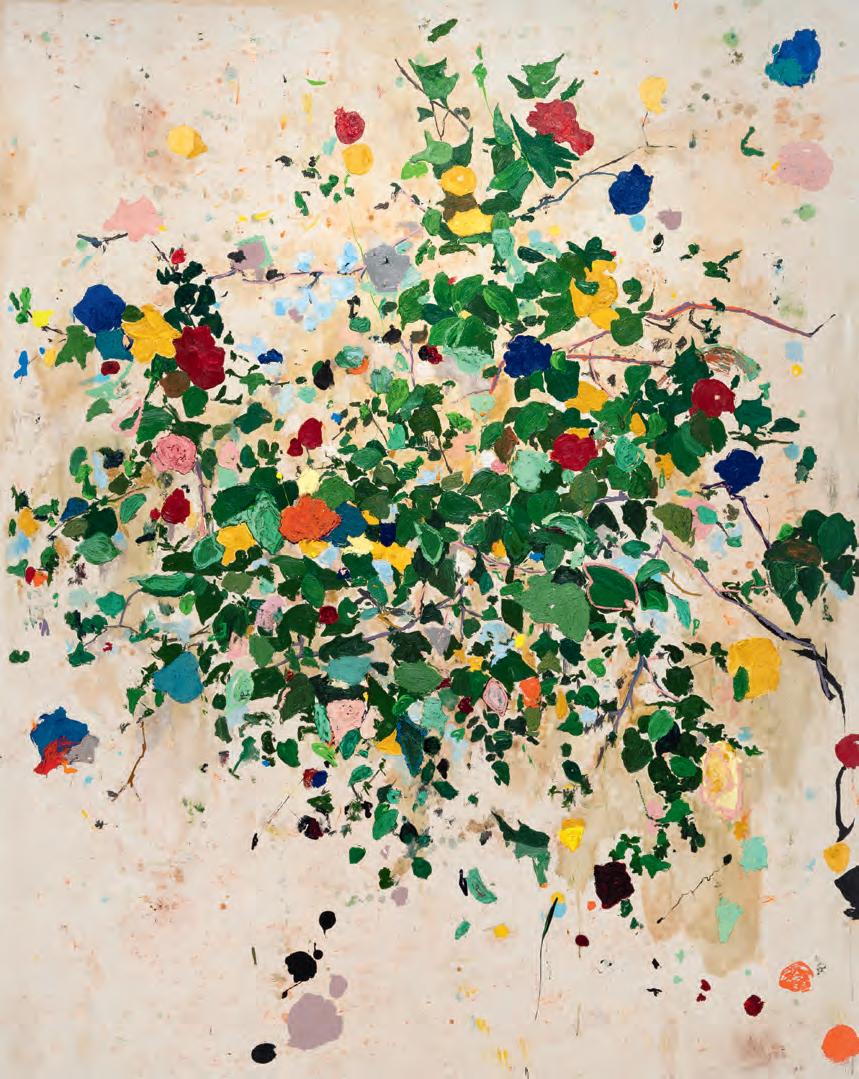
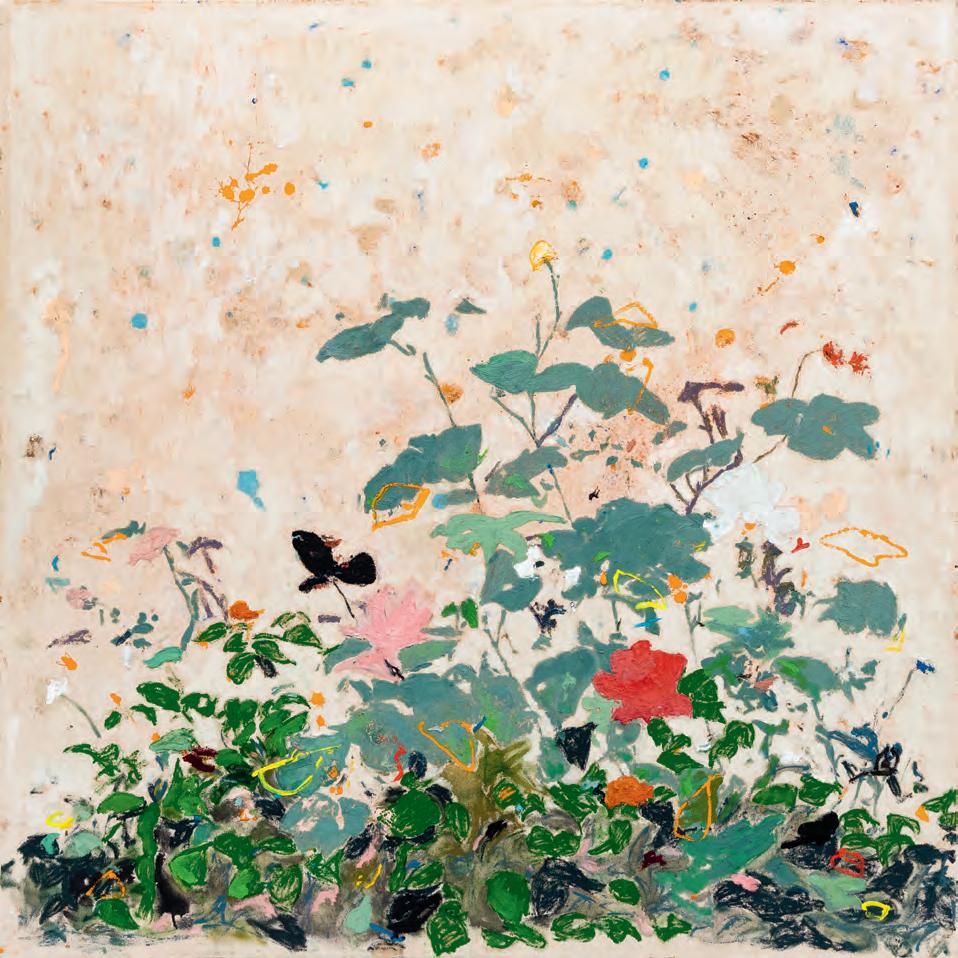
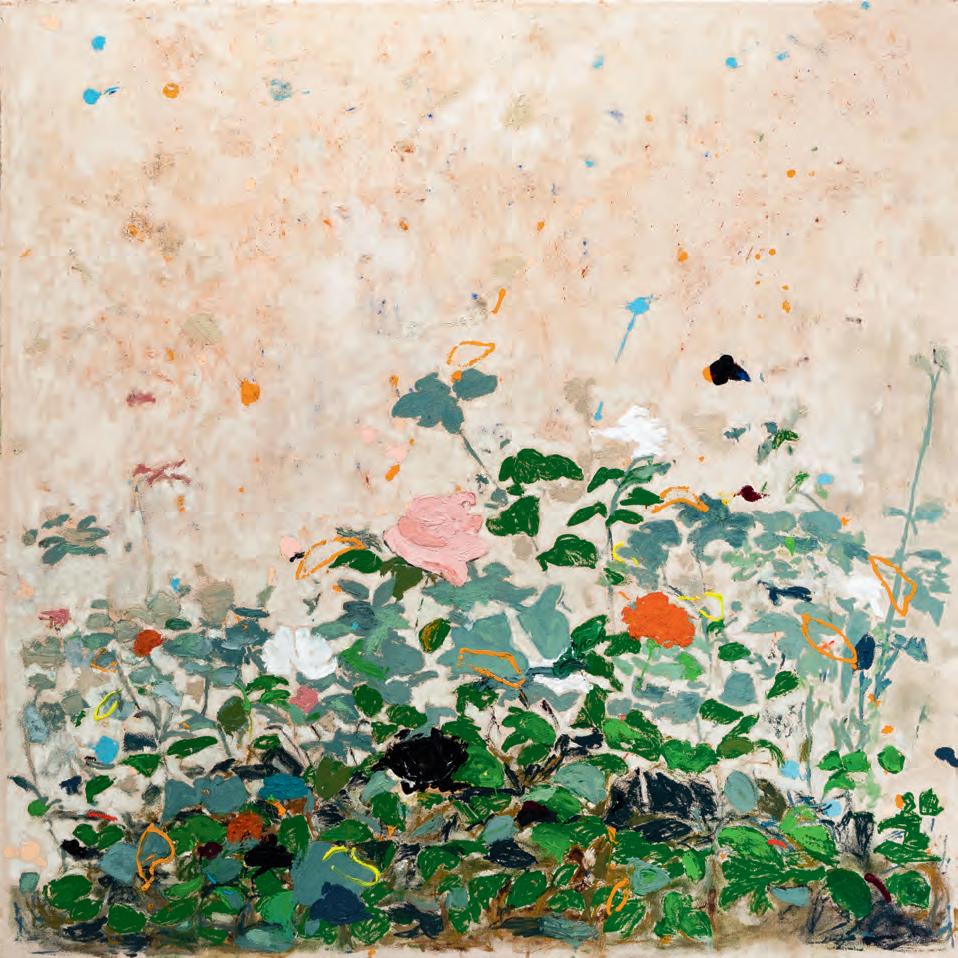
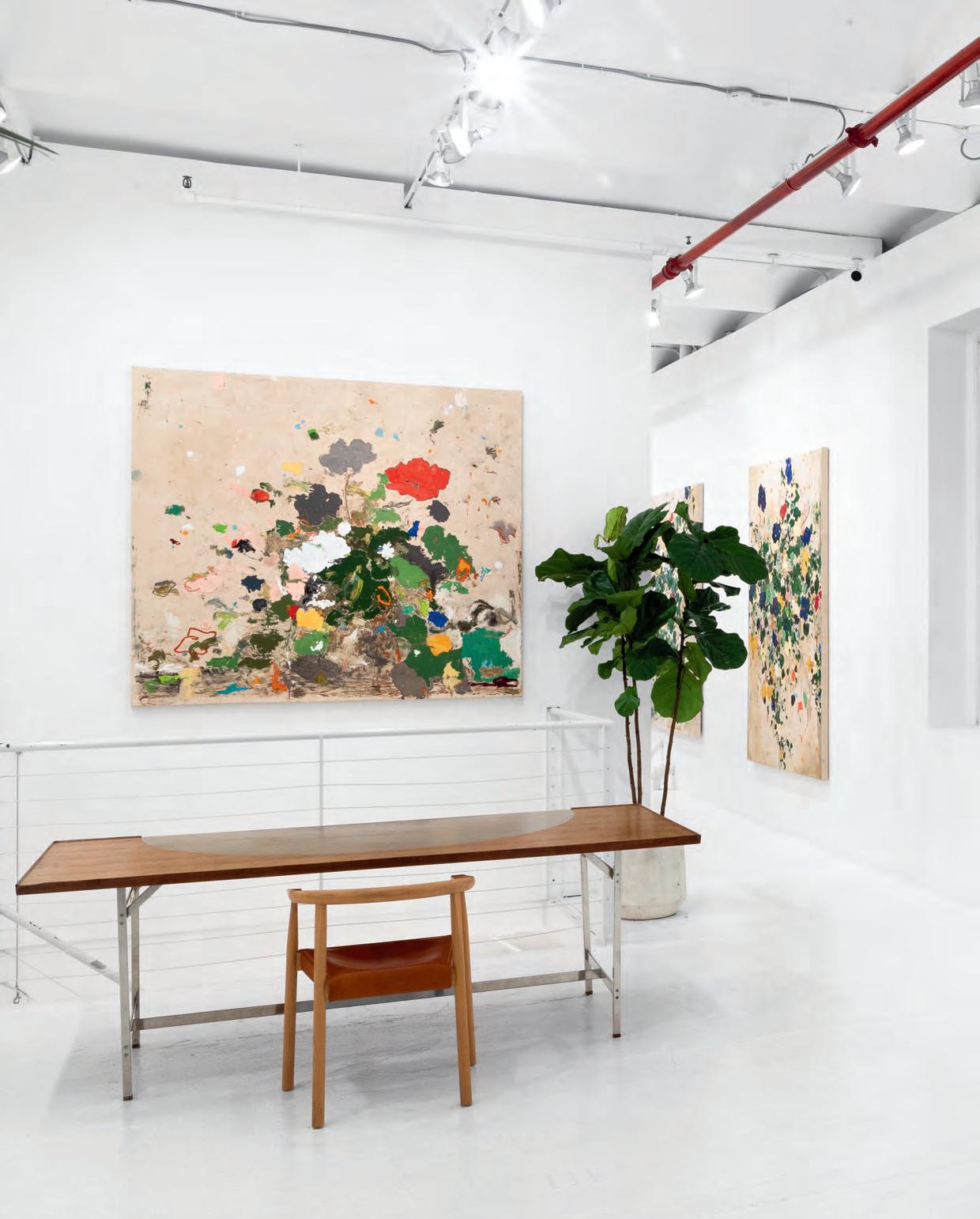
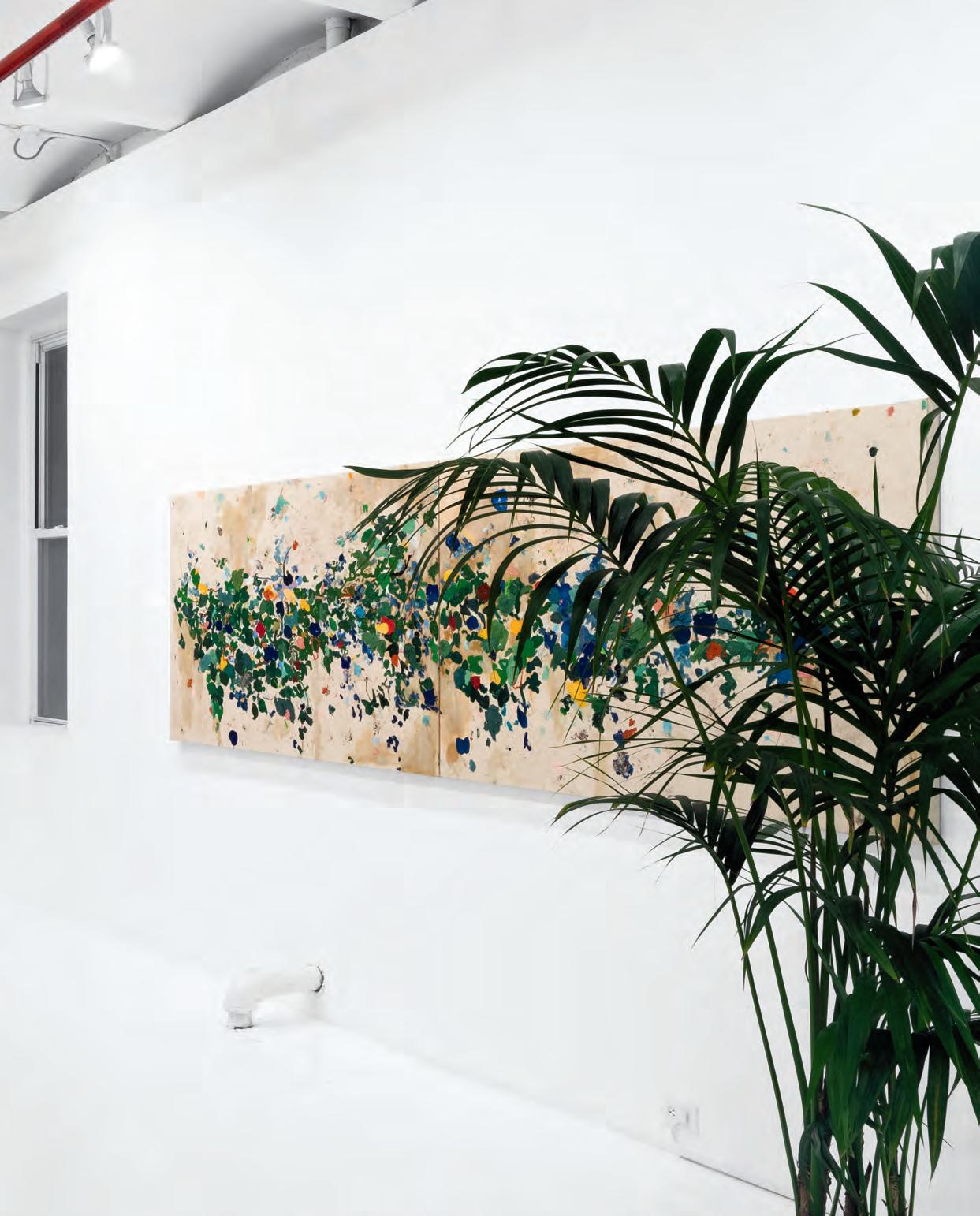

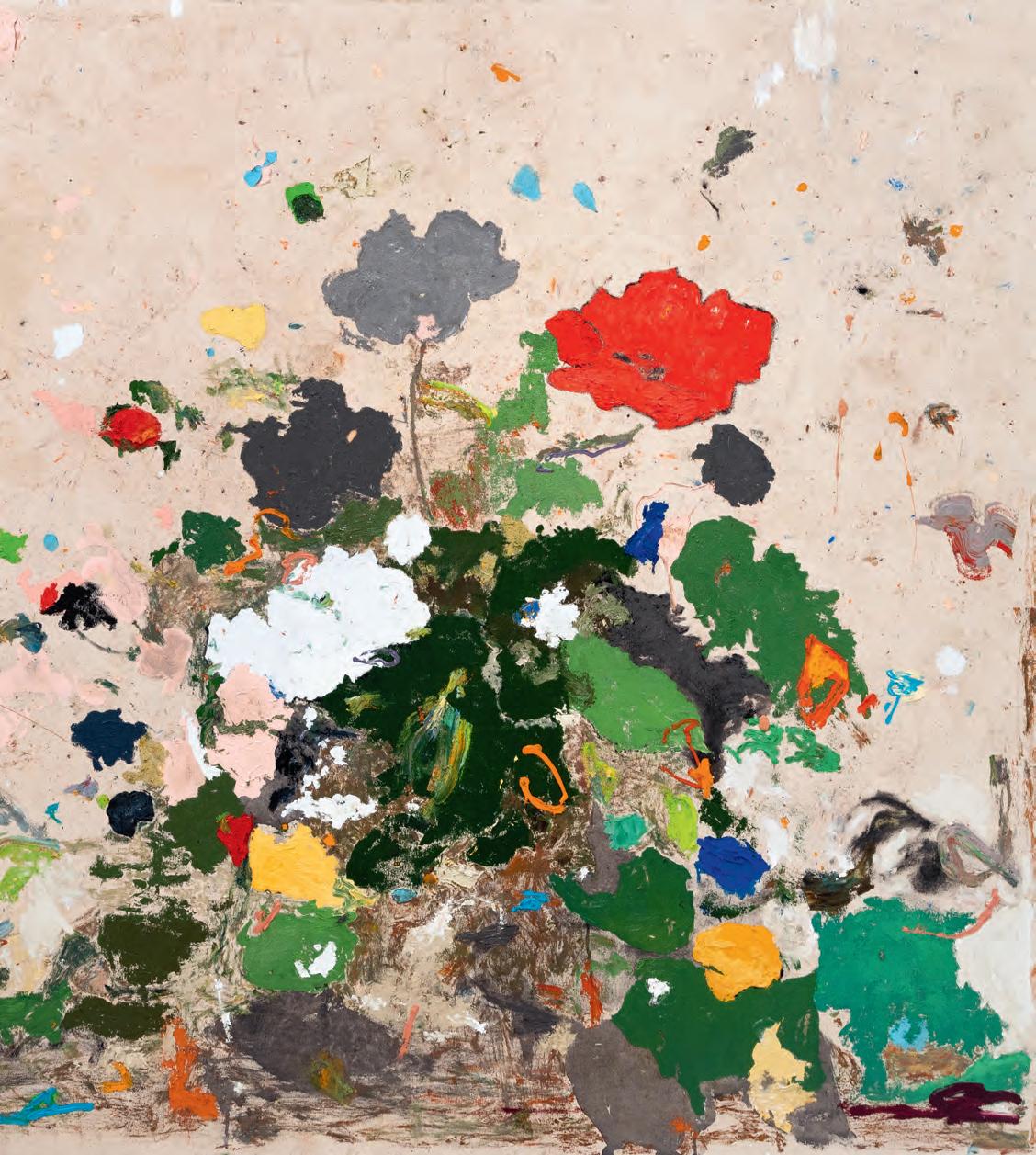
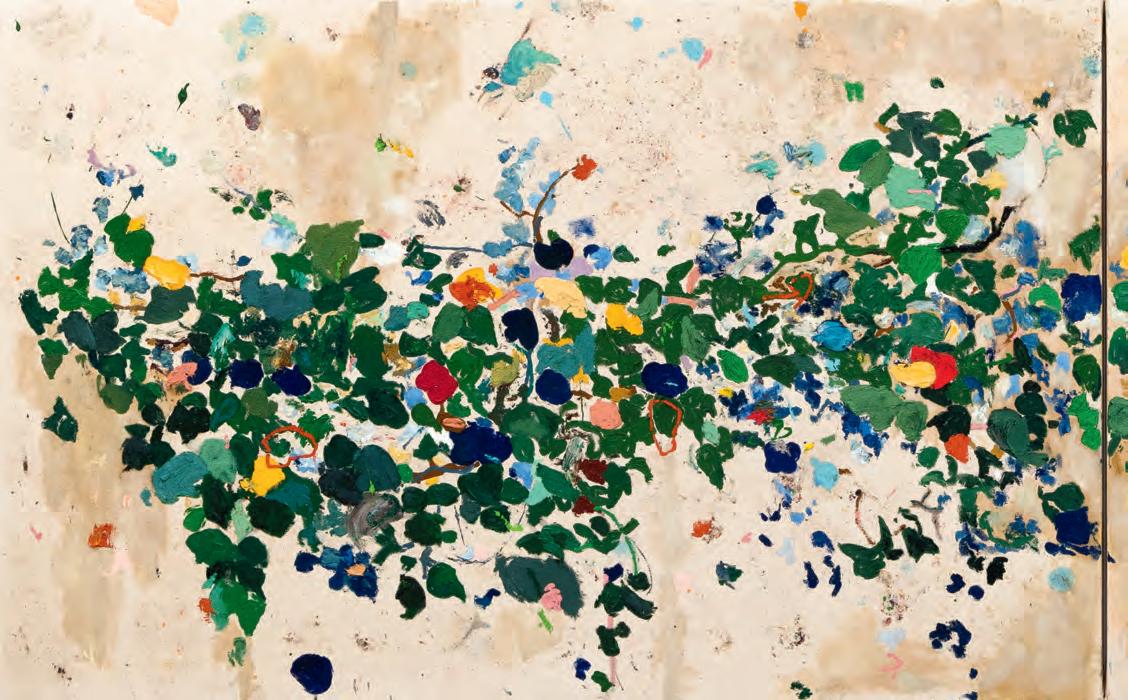
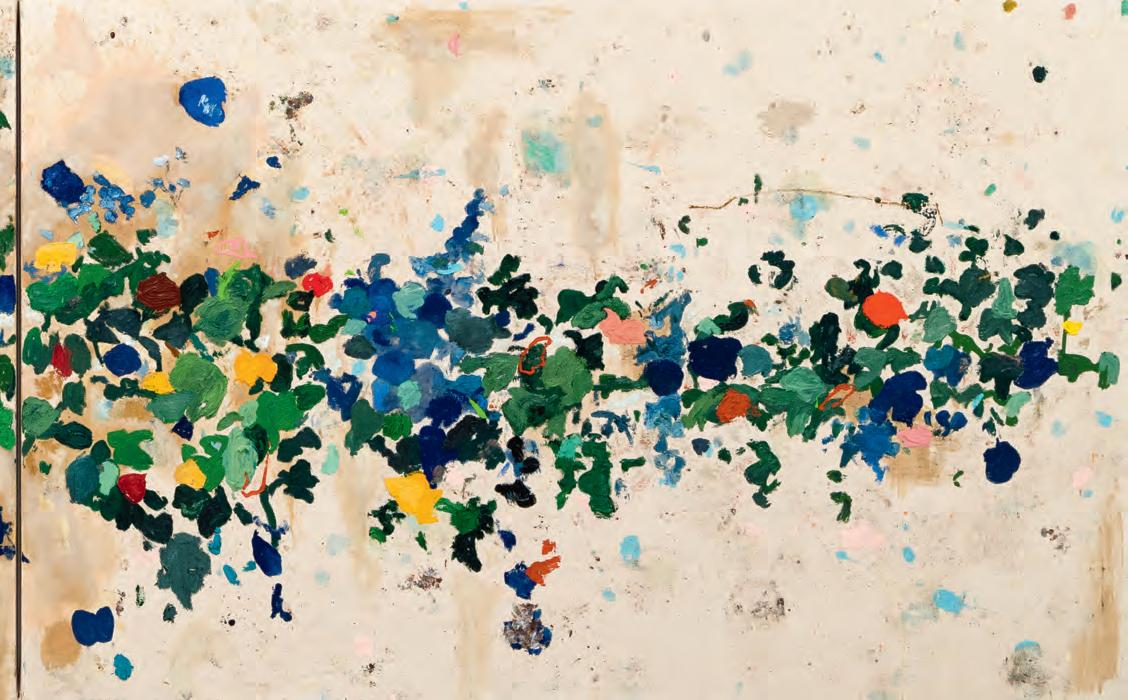
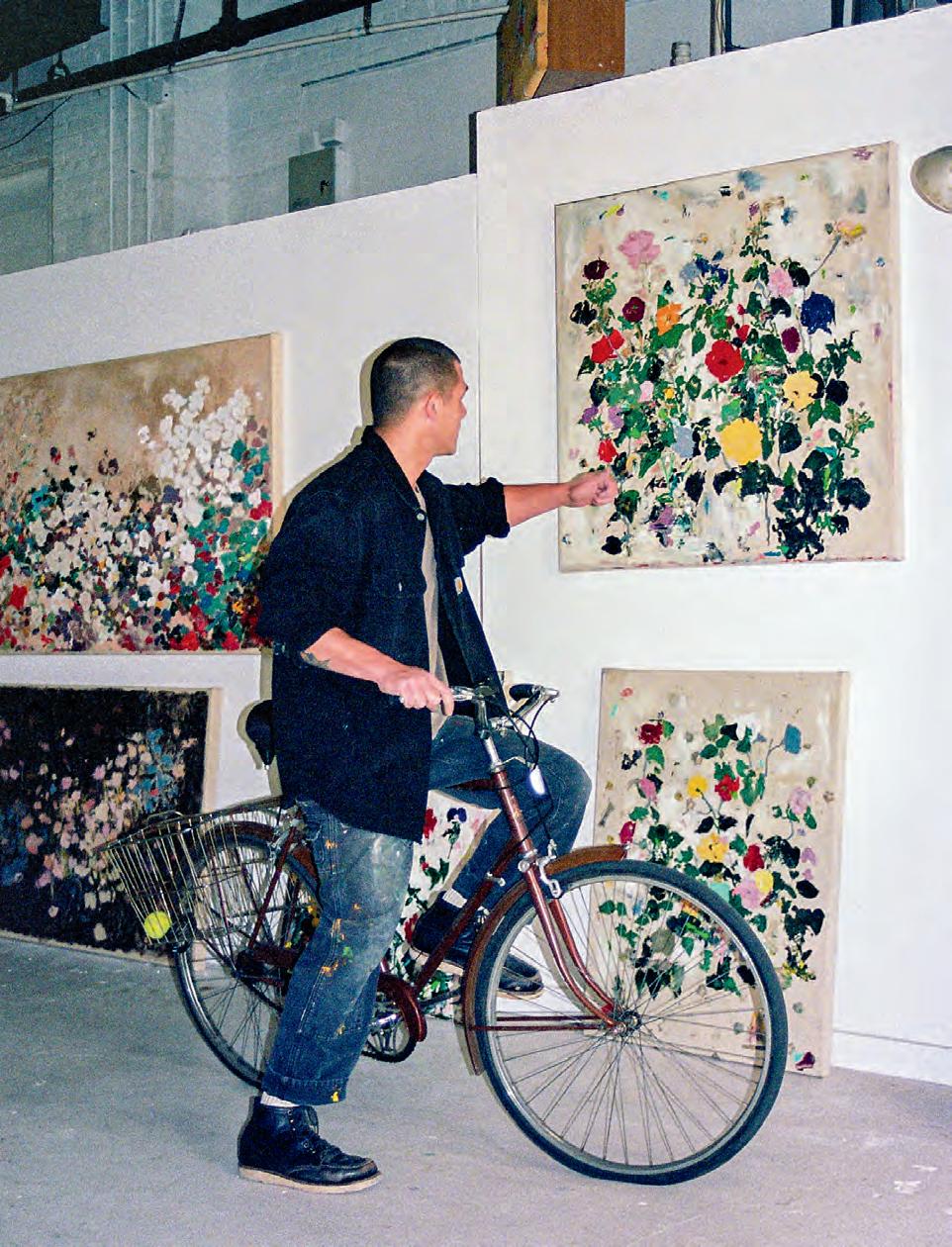
b. Lancaster, PA,1982
Lives and works Weston, CT
EDUCATION
SOLO EXHIBITIONS
GROUP EXHIBITIONS
AWARDS
2005 Certificate of Fine Arts, Pennsylvania Academy of the Fine Arts
2025 Huê Thi Hoffmaster: I Wish You Bluebirds, Eric Firestone Gallery, New York, NY
2023 Huê Thi Hoffmaster: Your Presence/Presents, Samek Art Museum, Bucknell University, Lewisburg, PA
2022 Carrie Haddad Gallery, Hudson, New York
2018 PLACE Millerton, Millerton, New York
2024 Raw, Eric Firestone Gallery, New York, NY
Summer Games, Eric Firestone Gallery, East Hampton, NY
Opening Day Lineup, Eric Firestone Gallery, East Hampton, NY
Some Histories, Eric Firestone Gallery, New York, NY
Fall Season 2024, Eric Firestone Gallery, East Hampton, NY
2023 (Mostly) Women, (Mostly) Abstract, Eric Firestone Gallery, East Hampton, NY; New York, NY
Freaky Flowers, September Gallery, Kinderhook, NY
2022 Mohawk Regional Invitational, Albany Center Gallery, NY
Delphian Gallery Juried Exhibition, Unit 1 Gallery, London, UK
Outside In: Textures and Abstractions, BAM Art Advisory Invitational, Larchmont, NY
3Walls Pop-Up, The Invisible Dog, Brooklyn, NY
Mohawk Hudson Regional 2021, Albany Center Gallery, September 2021 Albany, NY
2021 The Hudson Eye, New York
Carrie Haddad Gallery, 30th Anniversary Invitational, Hudson, New York
2020 Jewel the Wound, Hudson Milliner Art Salon, New York
2019 Saatchi’s The Other Art Fair Juried Exhibition, Brooklyn, New York
41 Main Street, Millerton, New York
2005 ASE, Pennsylvania Academy of the Fine Arts Museum
2022 Delphian Gallery Open Call Winner, Unit1Gallery, London, UK
2021 Piece with Artist Winner
Mohawk Regional Invitational Winner, Albany Center Gallery, NY
2005 Toppan Award for Excellence in Figure Drawing, Philadelphia, Pennsylvania
BIBLIOGRAPHY
Kathryn Romeyn, “Tour a Dallas Dwelling That Marries History With Modernity in Refreshing Ways,” Architectural Digest. September 25, 2024.
Tessa Solomon, “The Best Booths at EXPO Chicago,” ARTNews. April 12, 2024.
New American Paintings, Northeast Issue #170, Volume 29, Issue 2. Feb/March 2024.
Pearl Fontaine, “Eric Firestone Presents Two-part Show of Women Artists Working In Abstraction (Mostly),” Whitewall. August 17, 2023.
Taliesin Thomas, “’Freaky Flowers’ at September Gallery in Kinderhook,” Chronogram. April 11, 2023.
“Huê Thi Hoffmaster, Painter,” Shoutout LA. April 3, 2023.
“The Summer Show Robert Goldstrom, Hue Thi Hoffmaster, Kahn & Selesnick, Louise Laplante, Andrea Moreau and Annika Tucksmith,” The Daily Gazette. July 8, 2022.
Wolfrantz Xhokaxhiu, “A Larchmont Art Consultant Proves Home Is Where the Art Is,” Westchester Magazine. July 5, 2022.
Matt Moment, “A Portrait of the Artist: In Conversation With Painter Huê Thi Hoffmaster,” Hudson Valley Magazine. June 15, 2022.
Bethany Fincher, “Collector Favorites: Bestselling Artists of October,” Saatchi Art October 20, 2021.
opposite detail of Untitled (I Wish You Bluebirds #3), see pl. 6
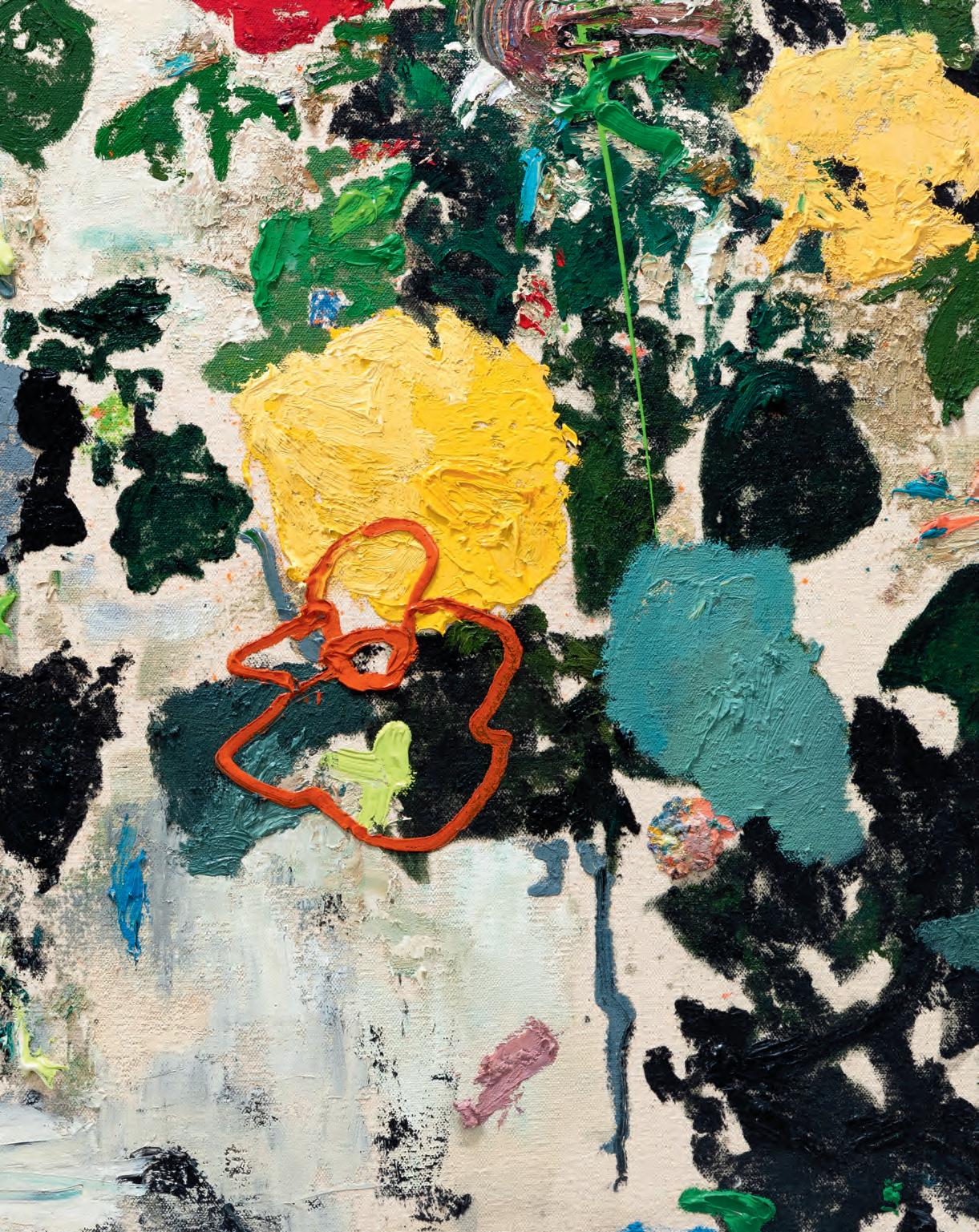
Thank you, Huê Thi Hoffmaster, for creating a beautiful body of work for this show. Thank you for your tireless painting practice, positive energy, and trusting the gallery with your work for these past years. We also would like to thank Lilly Wei for writing such a celebratory and evocative essay for this publication. We are grateful for the Menil Collection and the Cy Twombly Foundation, who assisted with images. Lastly, thank you to the whole team at Eric Firestone Gallery for making all of this happen!
— Eric Firestone
Published on the occasion of the exhibition
Huê Thi Hoffmaster: I Wish You Bluebirds
May 7 – June 14, 2025 on view at Eric Firestone Gallery
40 Great Jones Street, New York, NY
ISBN: 979-8-9885944-9-9
LCCN: 2025910059
Cover: detail of Untitled (I Wish You Bluebirds #16), see pl. 12
Inside front and back covers: details of Untitled (I Wish You Bluebirds #9), see pl. 7 Frontispiece, pages 10: The artist in his studio, 2025. Courtesy the artist. Photographs by Jonathan Flores.
Page 58: The artist in his studio, 2025. Courtesy of the artist. Photograph by Elizabeth Murray.
Publication copyright © 2025
Eric Firestone Press
Essay copyright © 2025 Lilly Wei
Exhibition photography © 2025 Sam Glass
All artwork © 2025 Huê Thi Hoffmaster
Reproduction of contents prohibited
All rights reserved
Published by Eric Firestone Press
4 Newtown Lane East Hampton, NY 11937
Principal: Eric Firestone
Managing Partner: Kara Winters
Senior Director: Jennifer Samet
Associate Director: Maddy Henkin
Research Assistant: Alabel Chapin
Photography: Sam Glass
Design: Isabelle Smeall
Printing: GHP

Eric Firestone Gallery
40 Great Jones Street New York, NY 10012
646-998-3727
4 Newtown Lane East Hampton, NY 11937
631-604-2386
Ericfirestonegallery.com